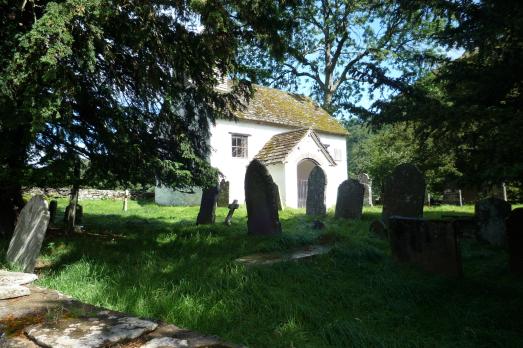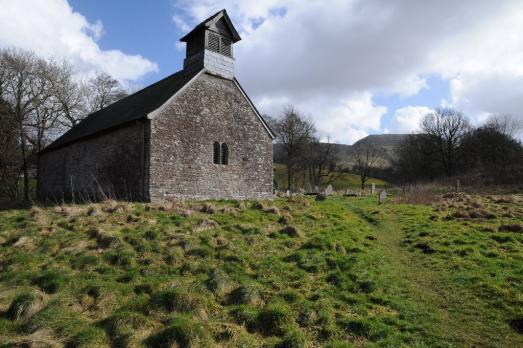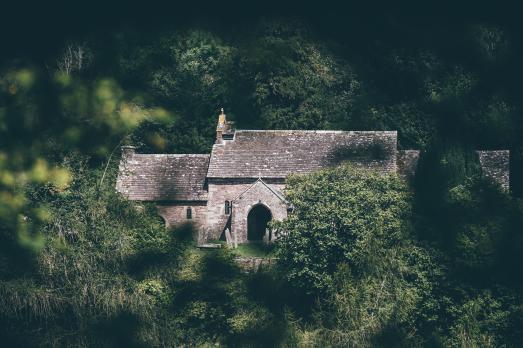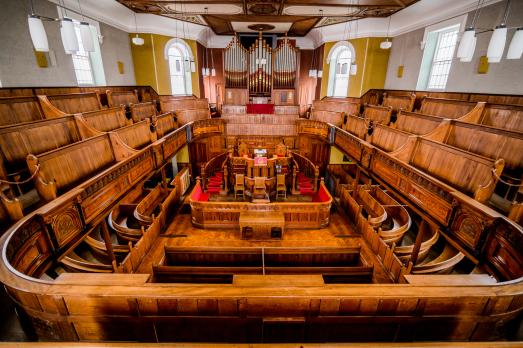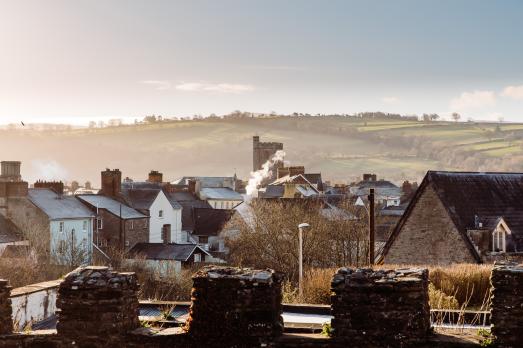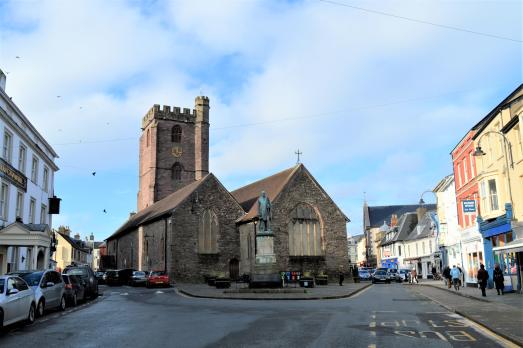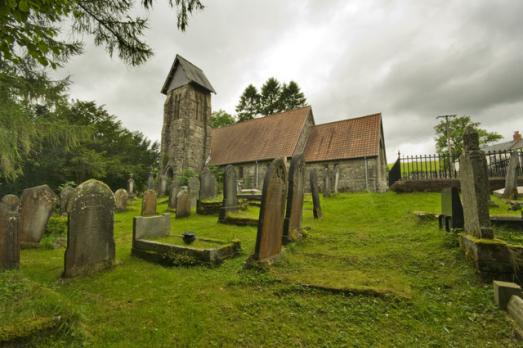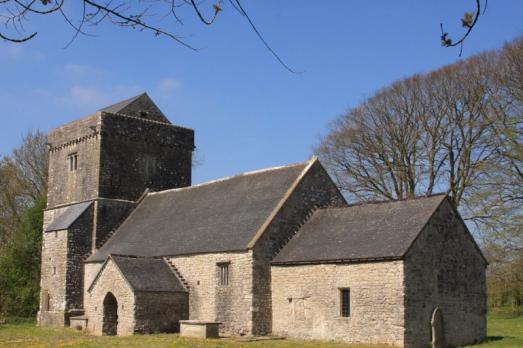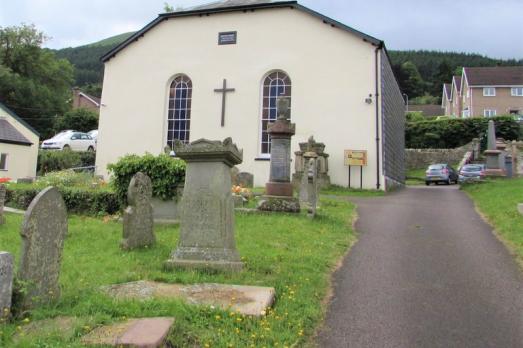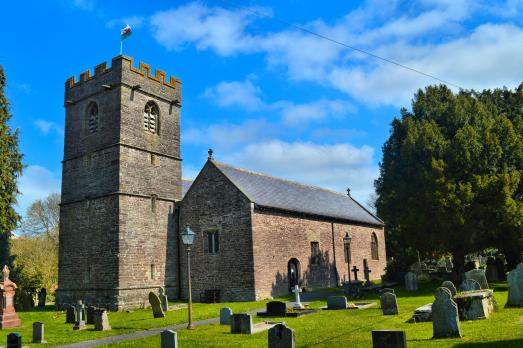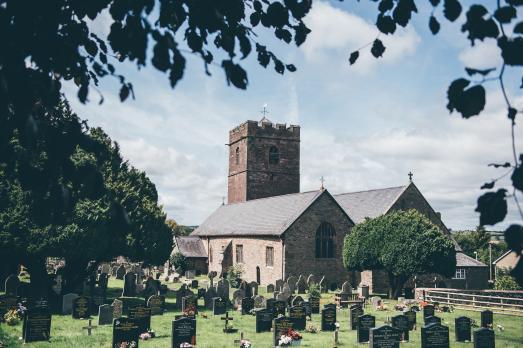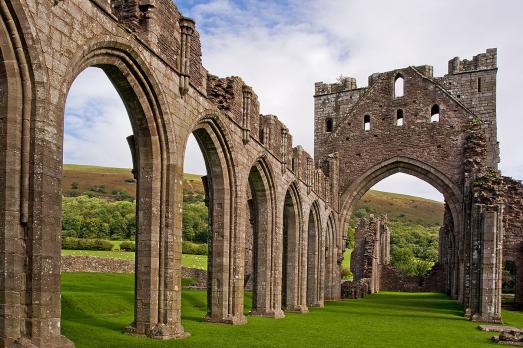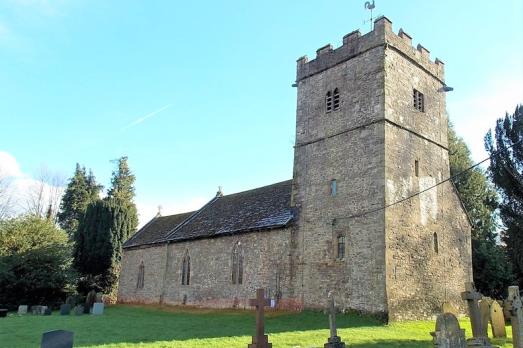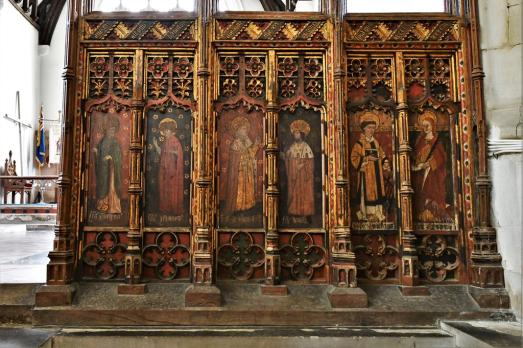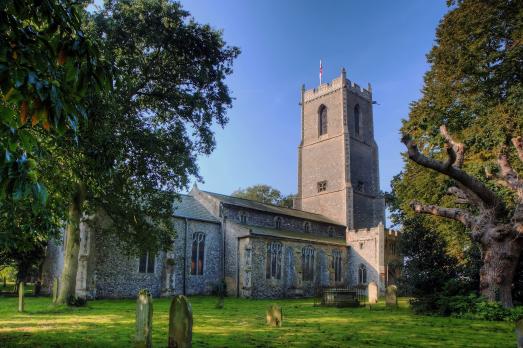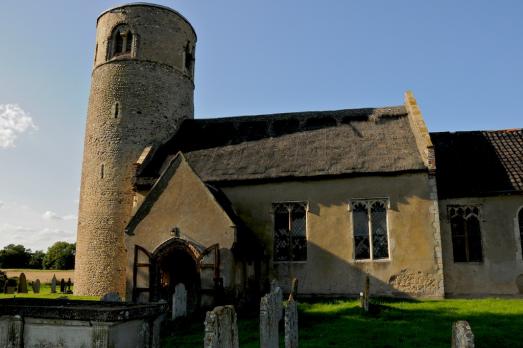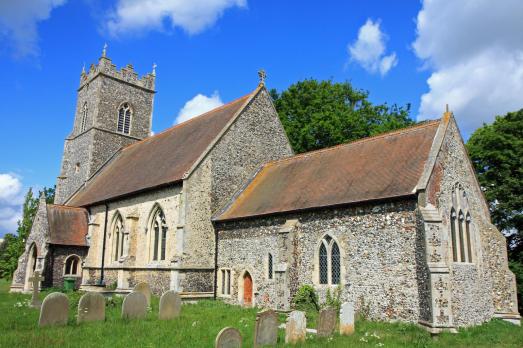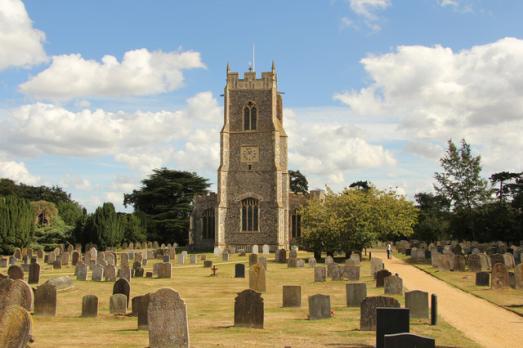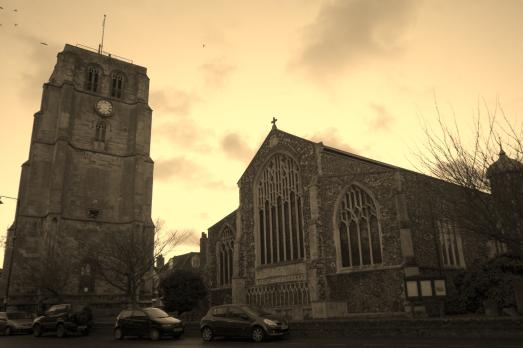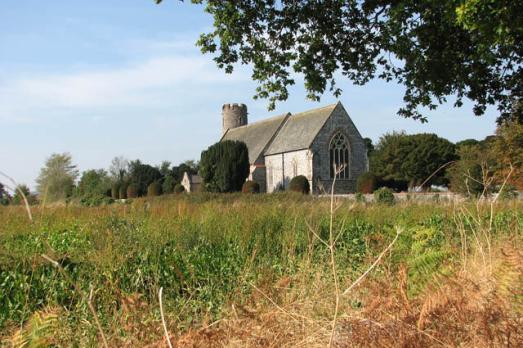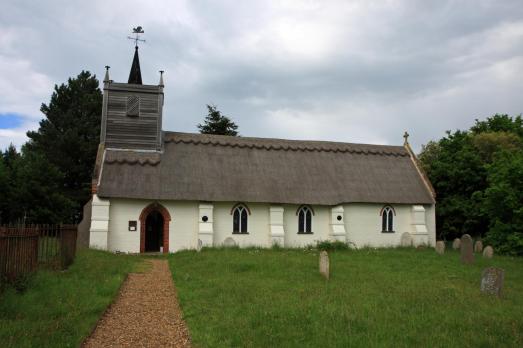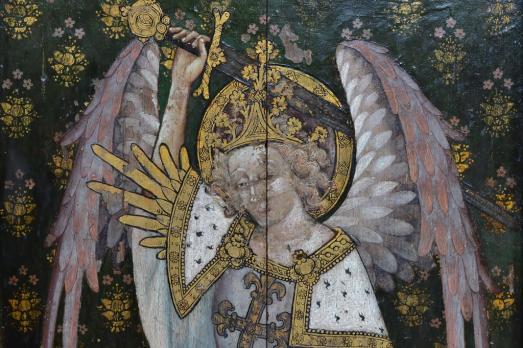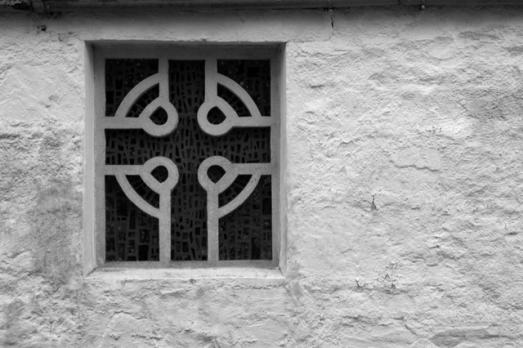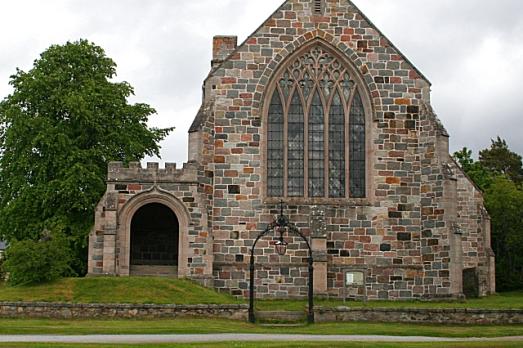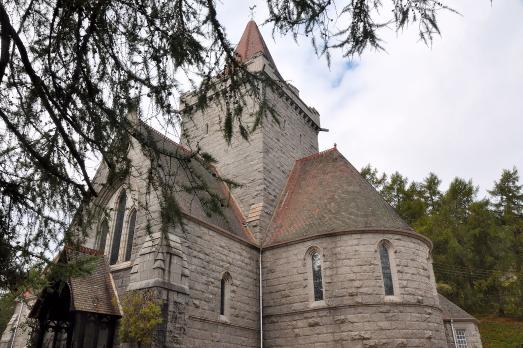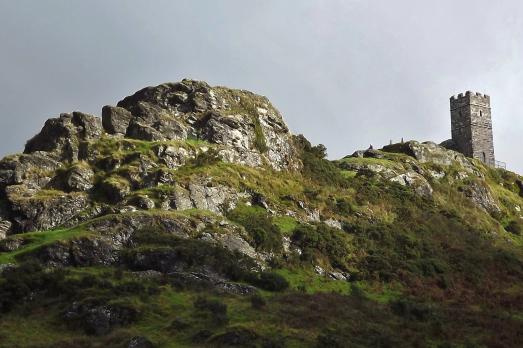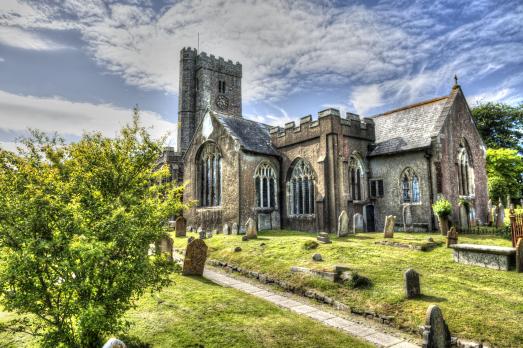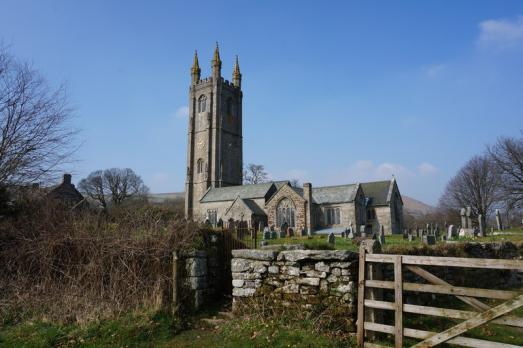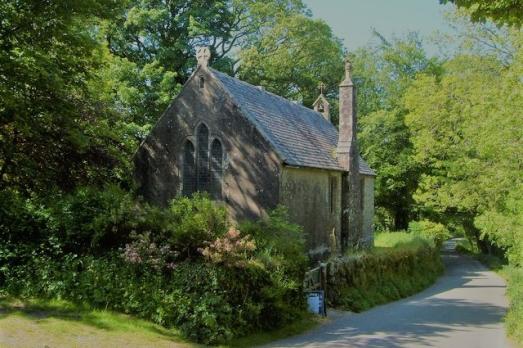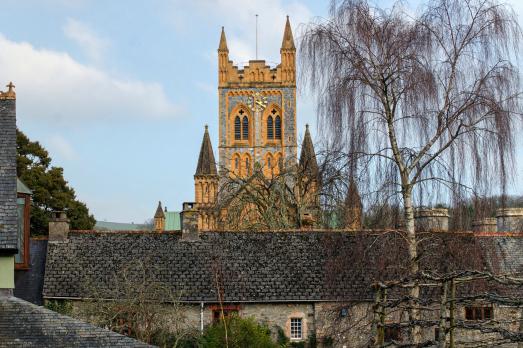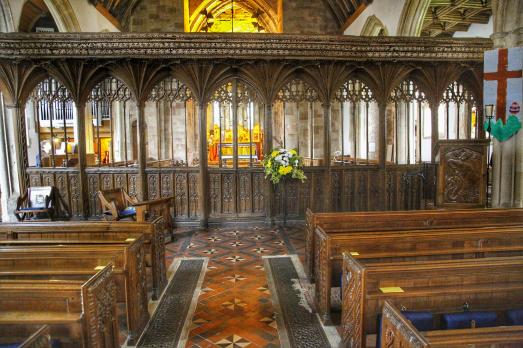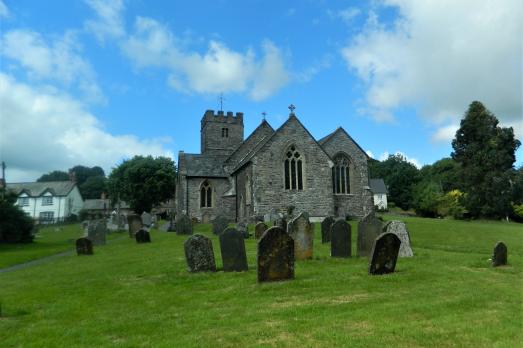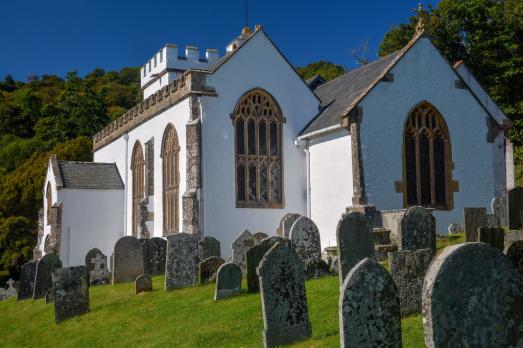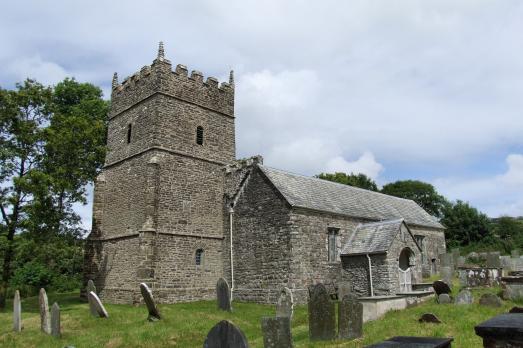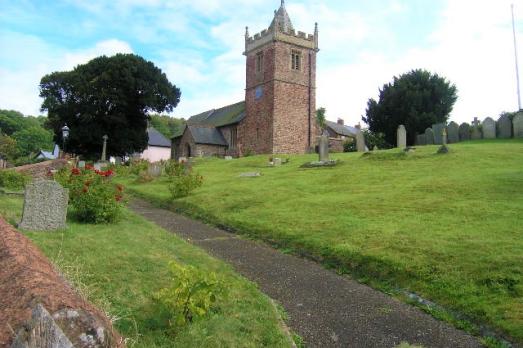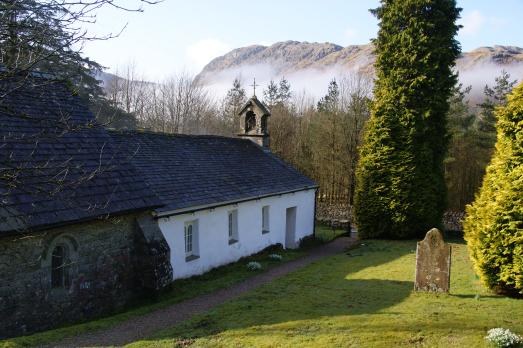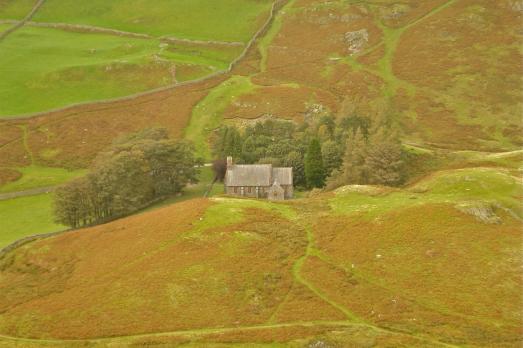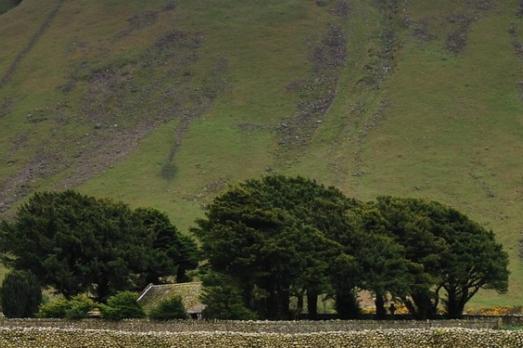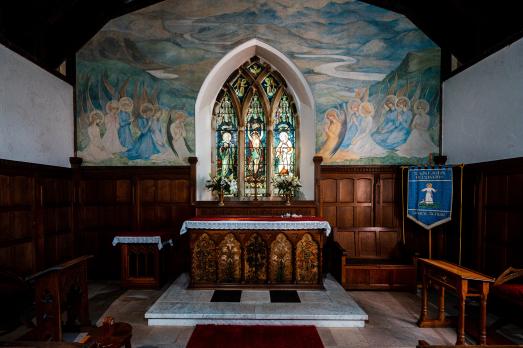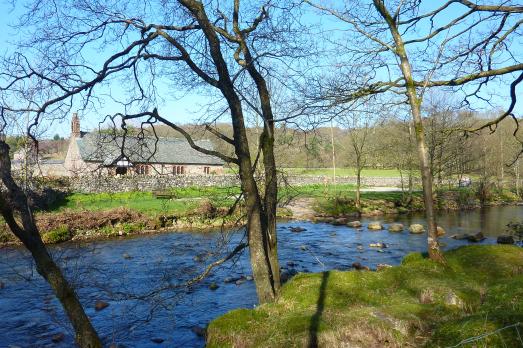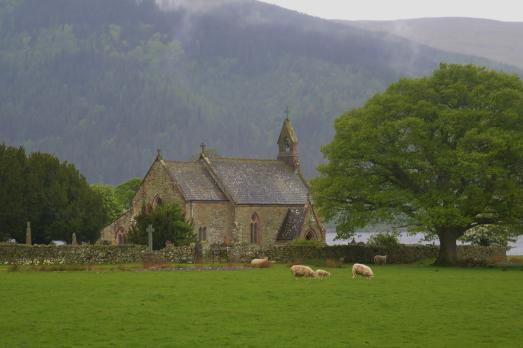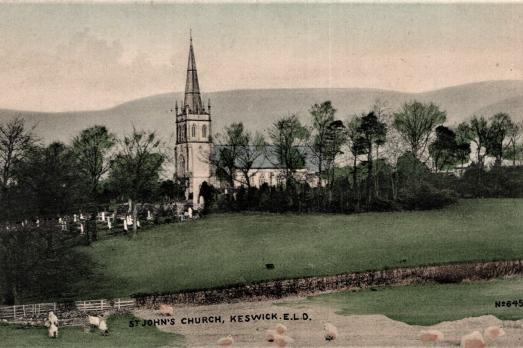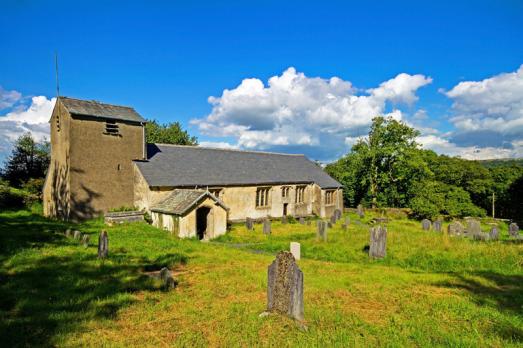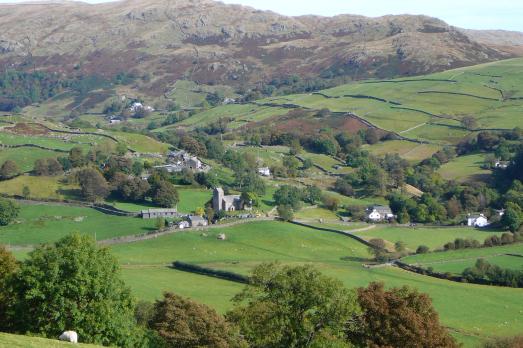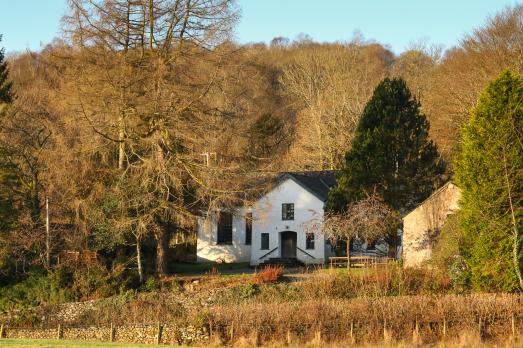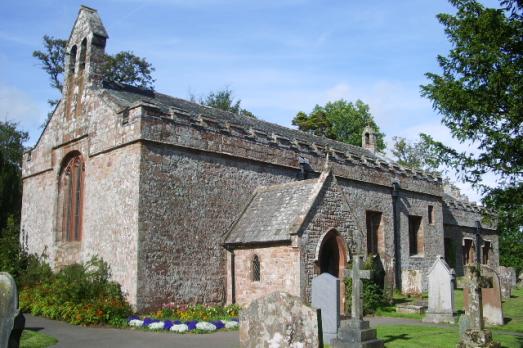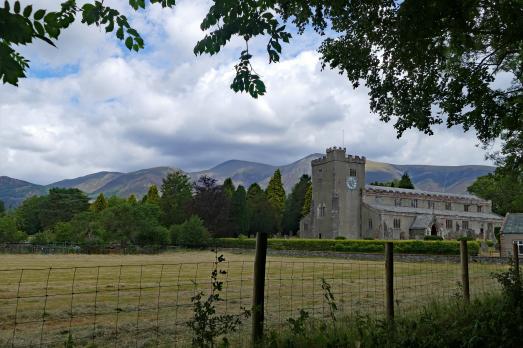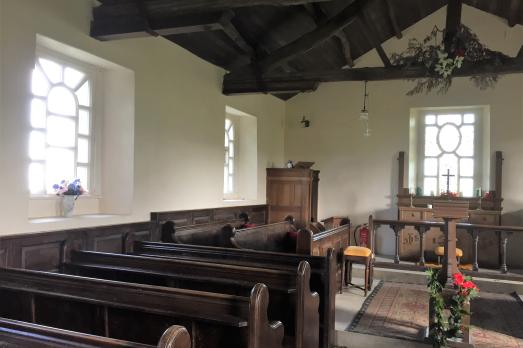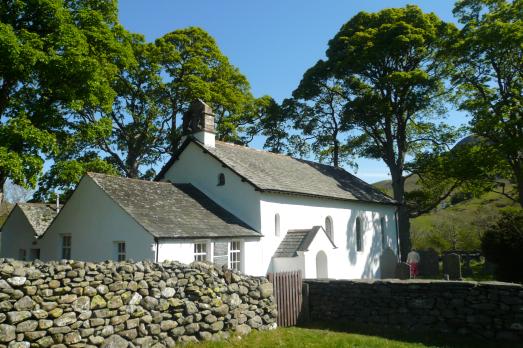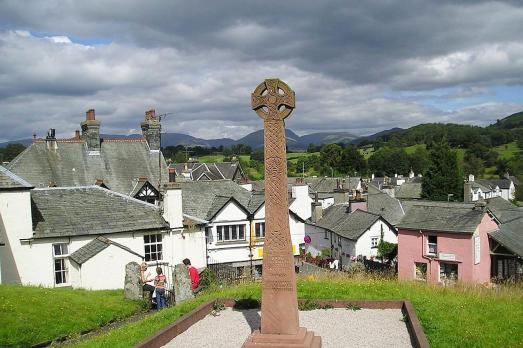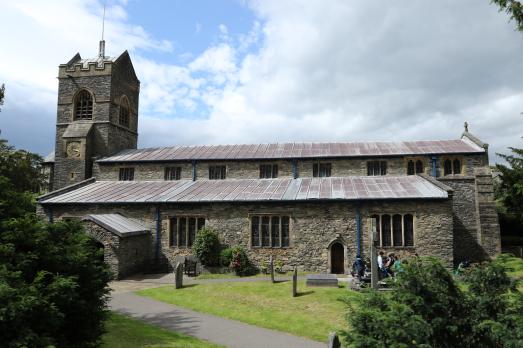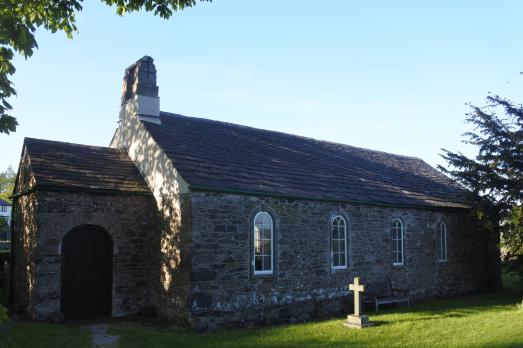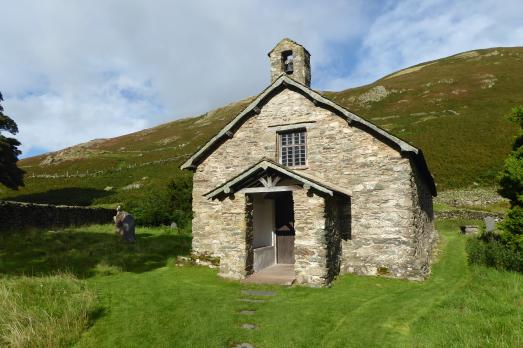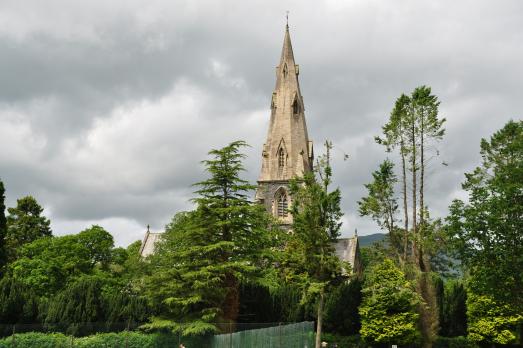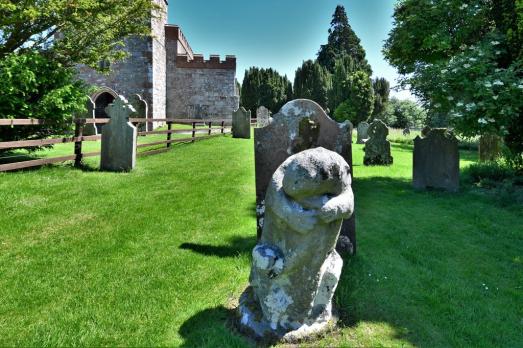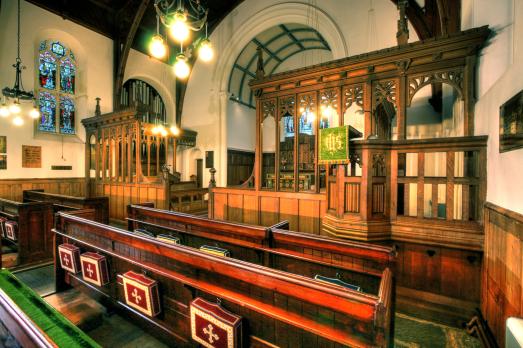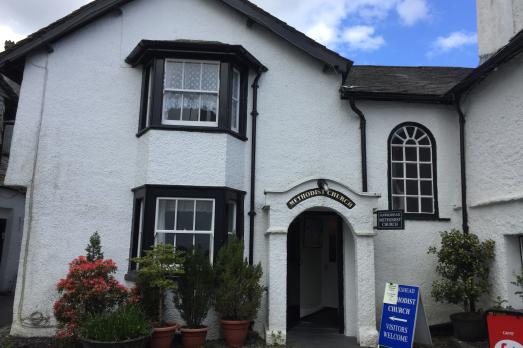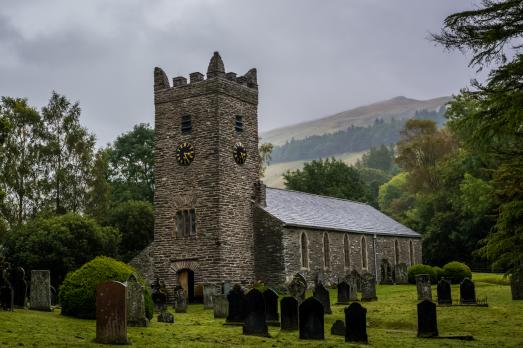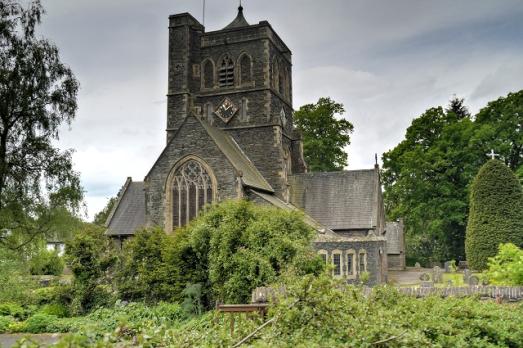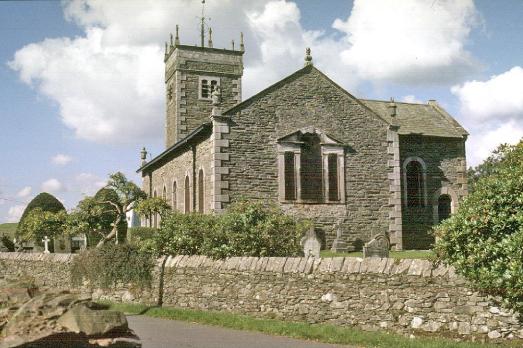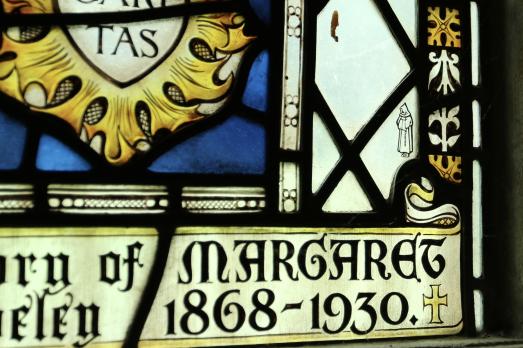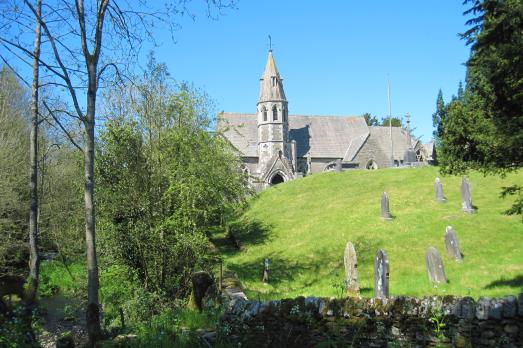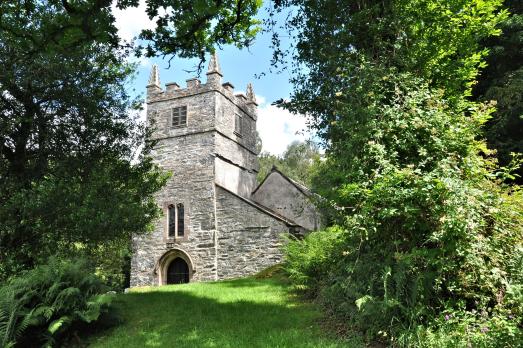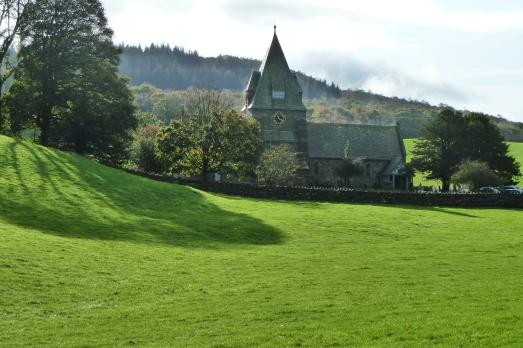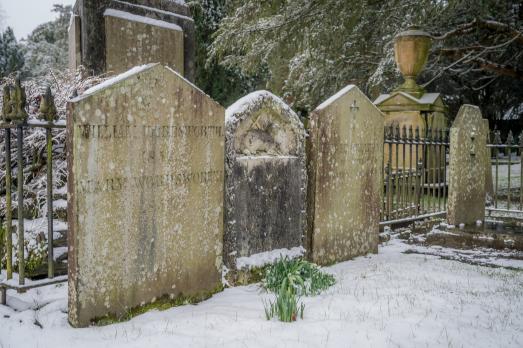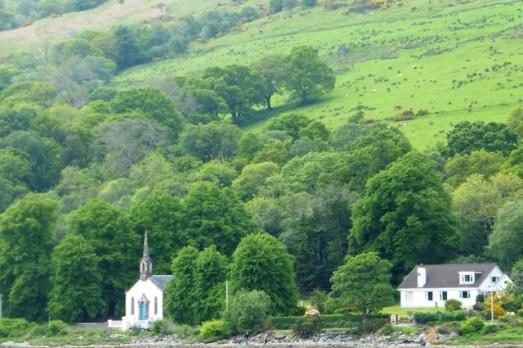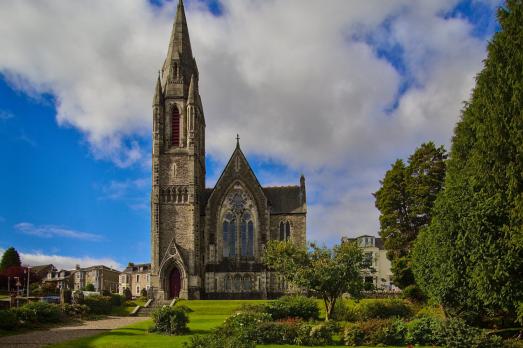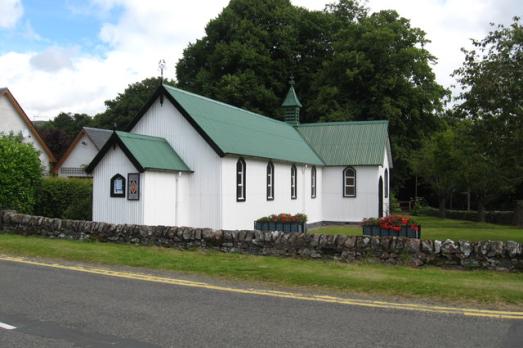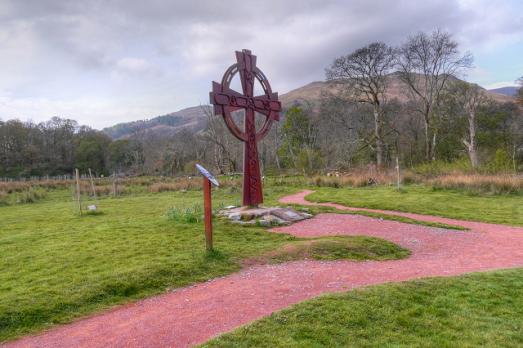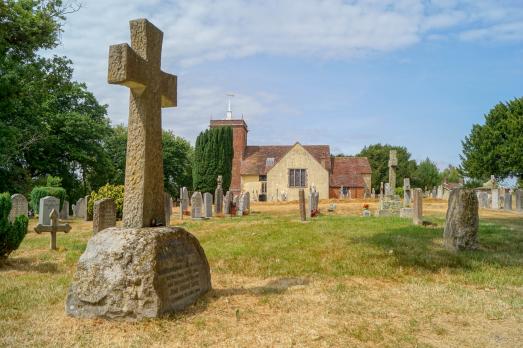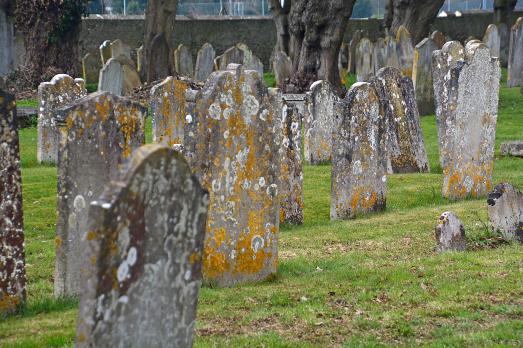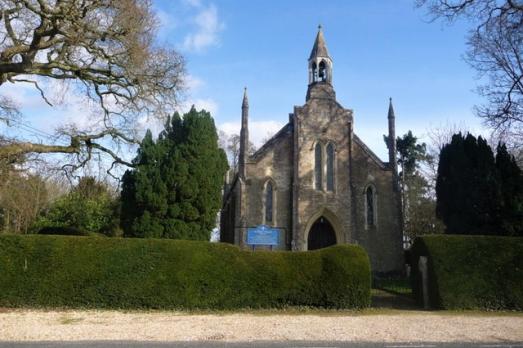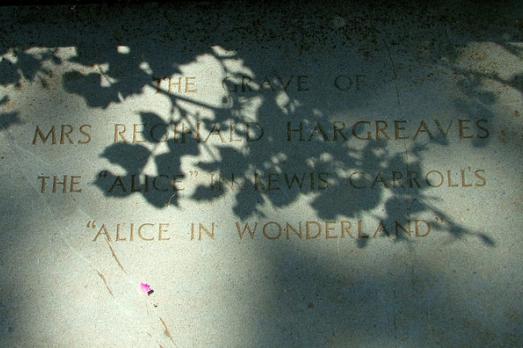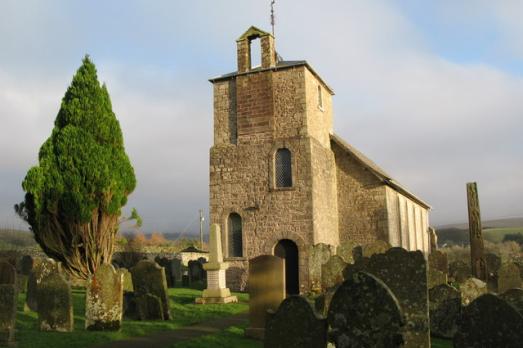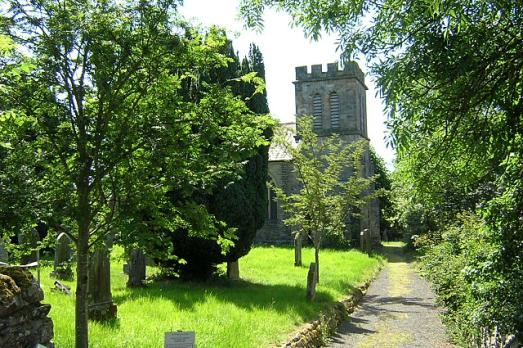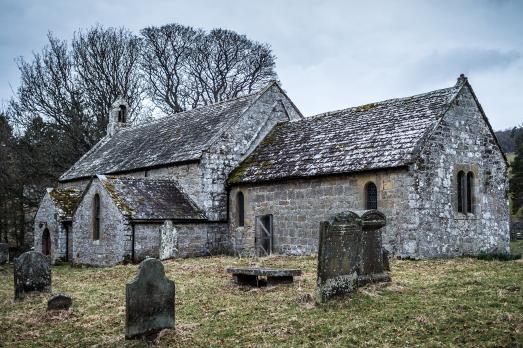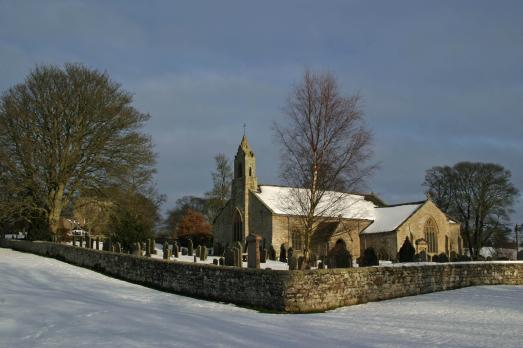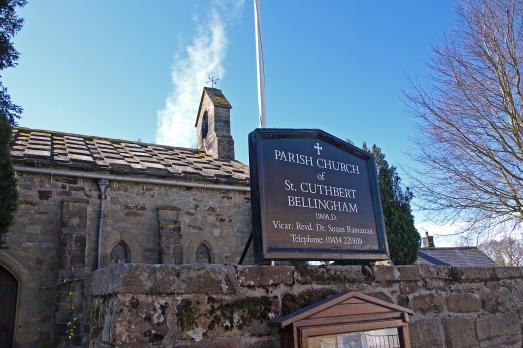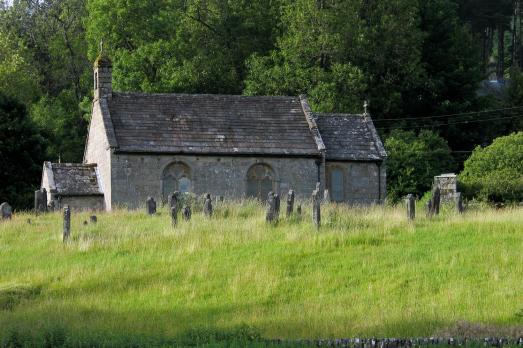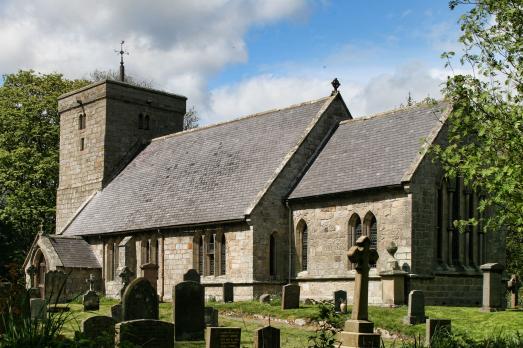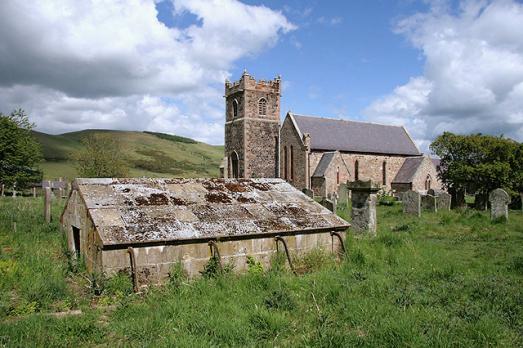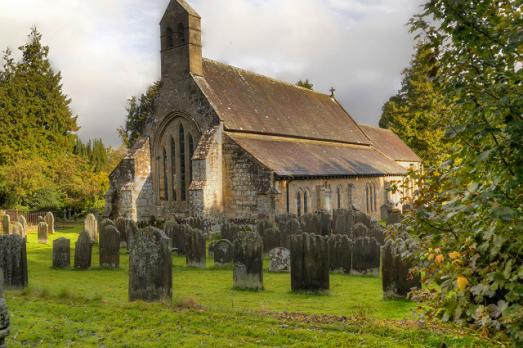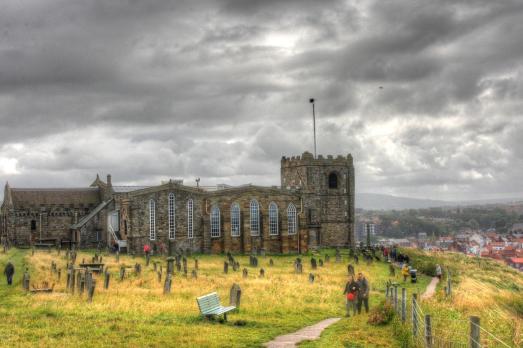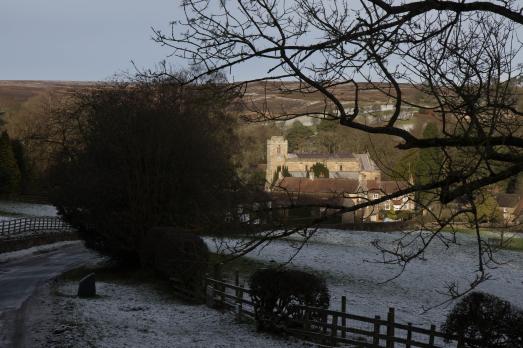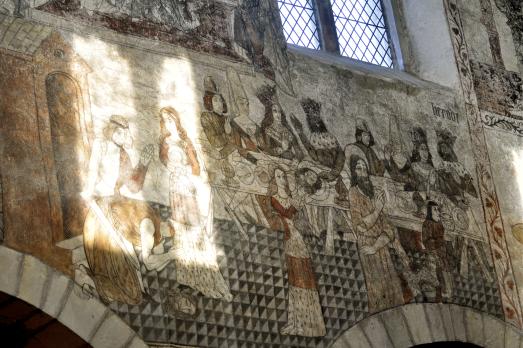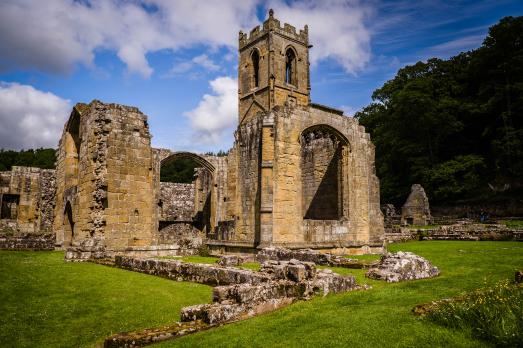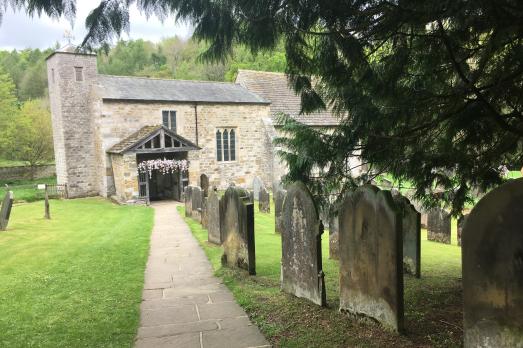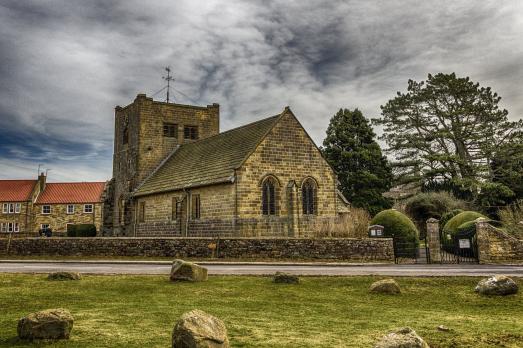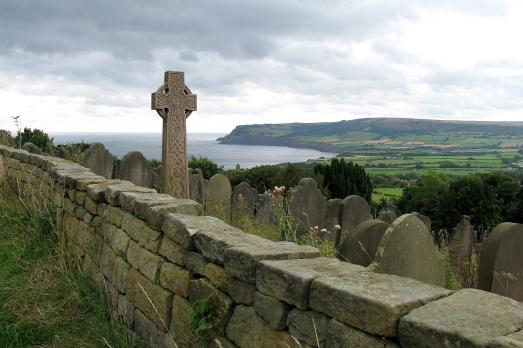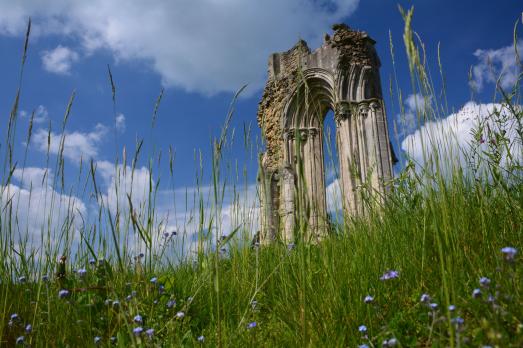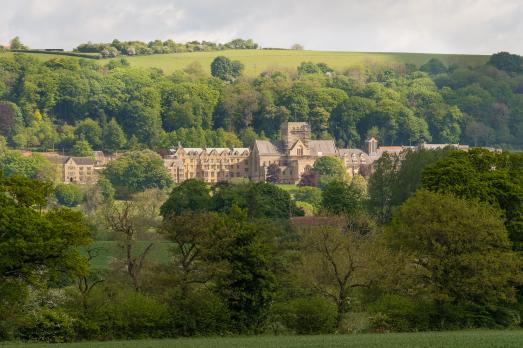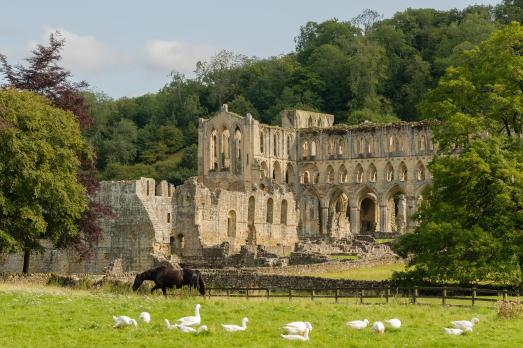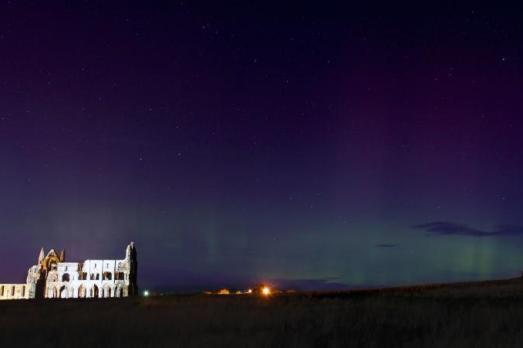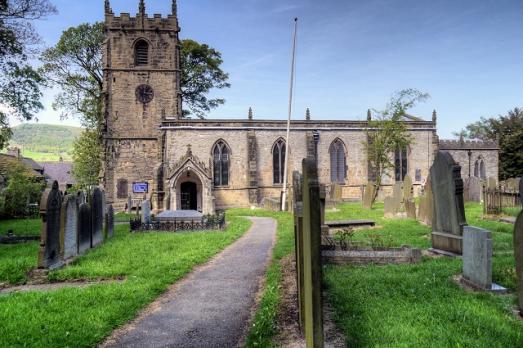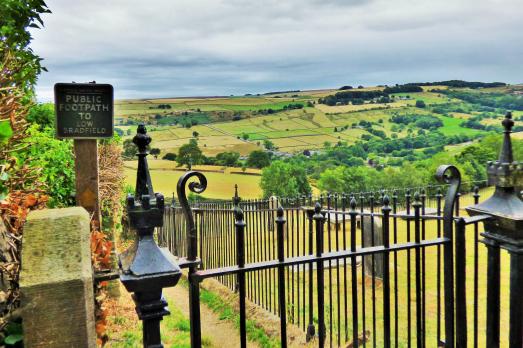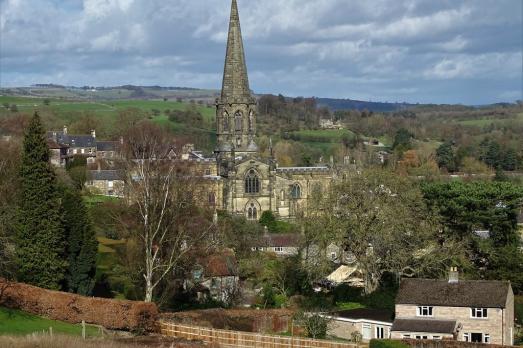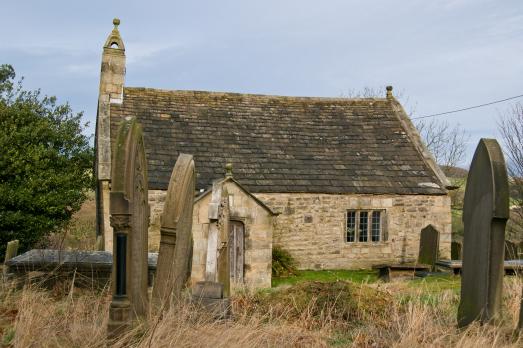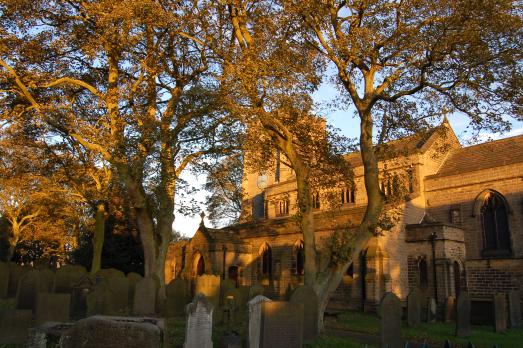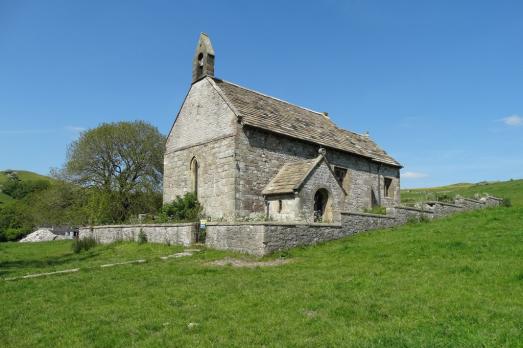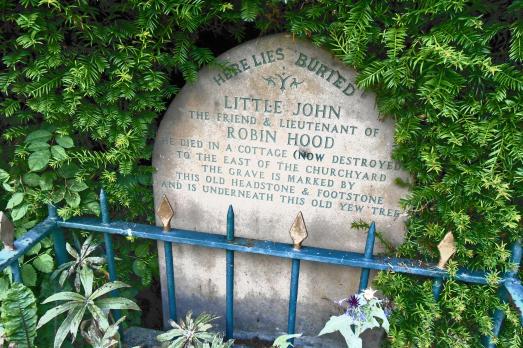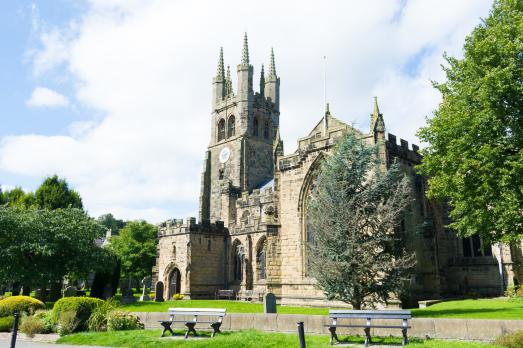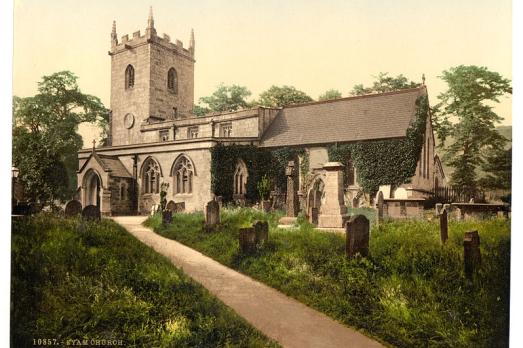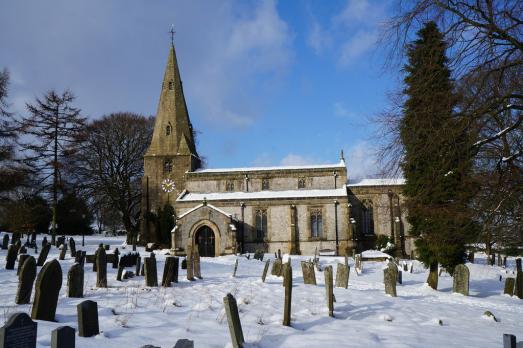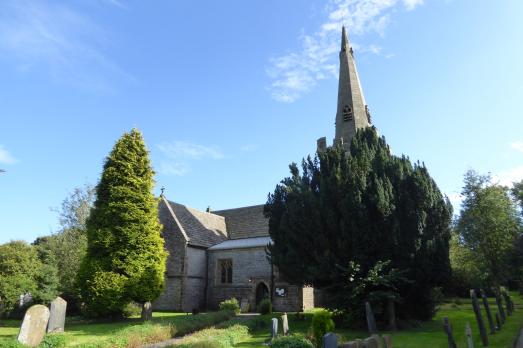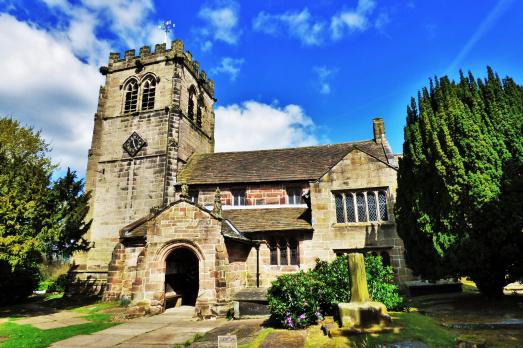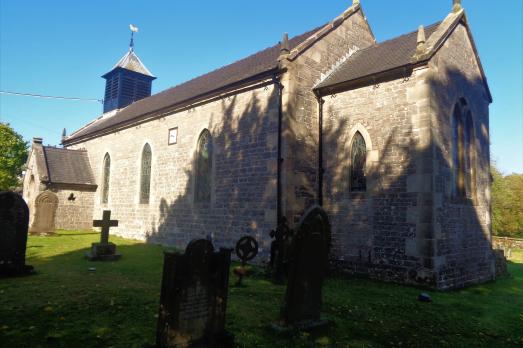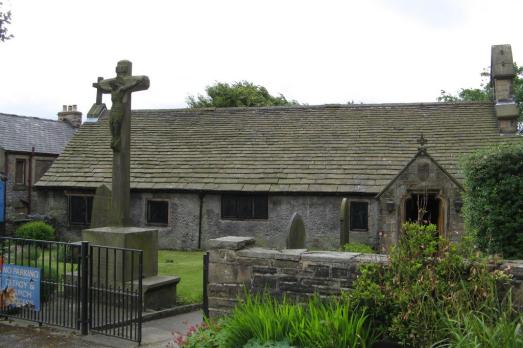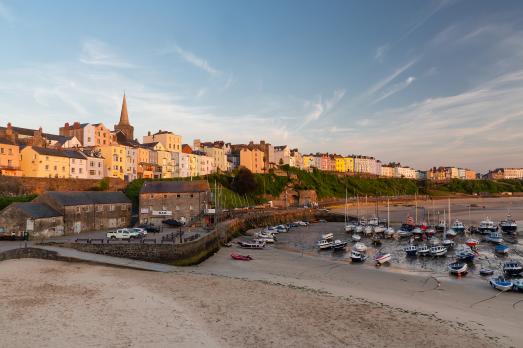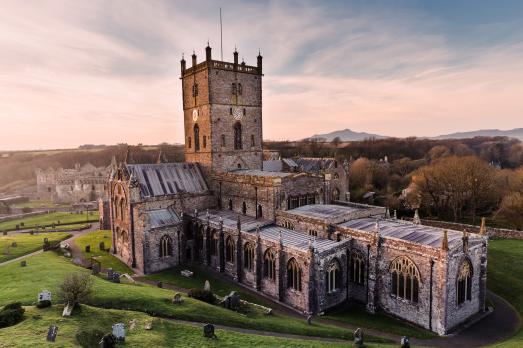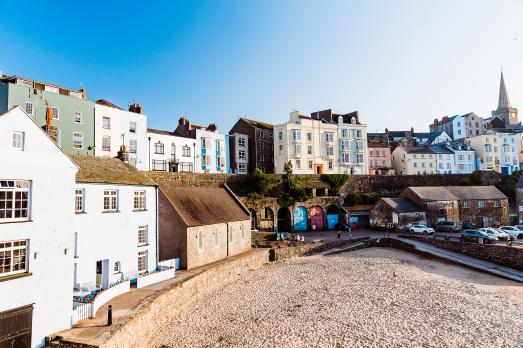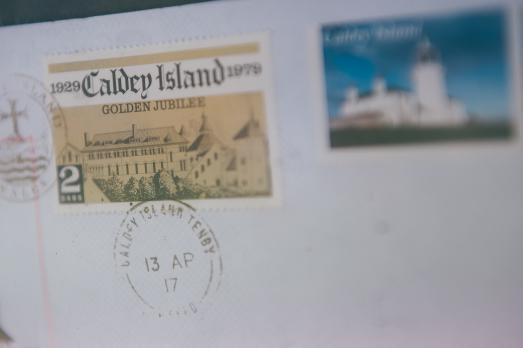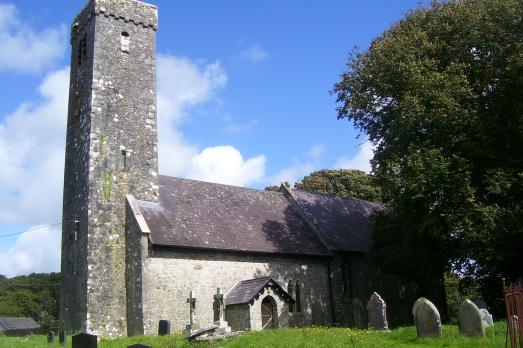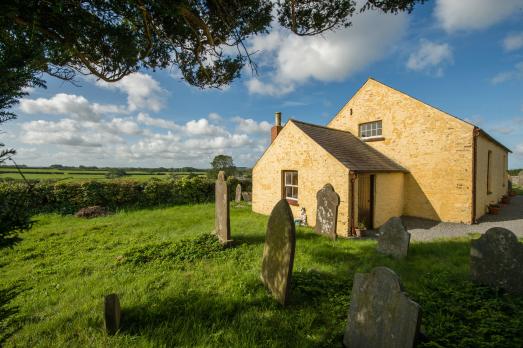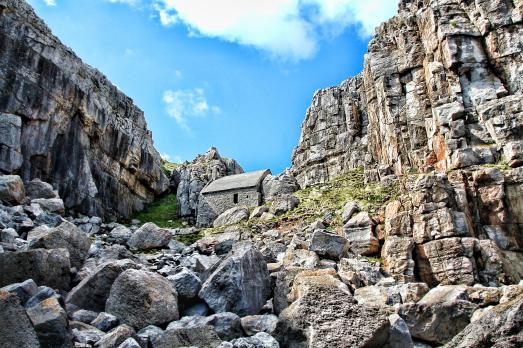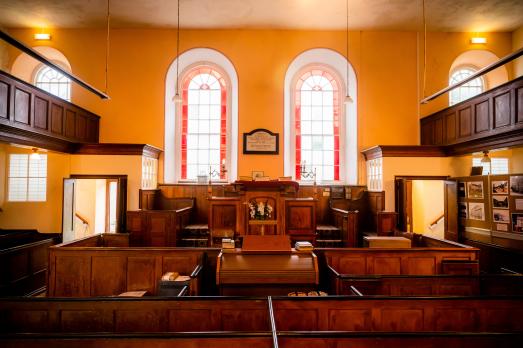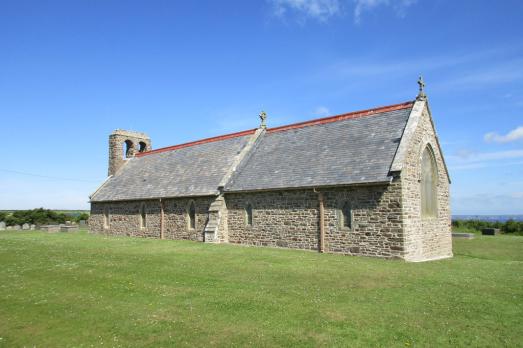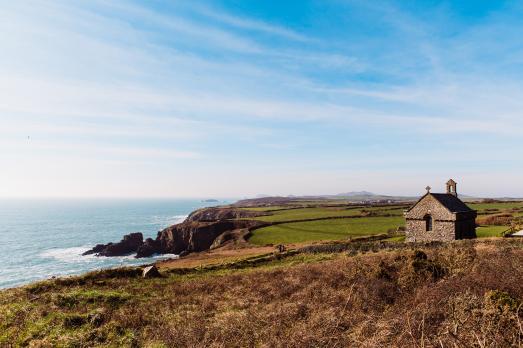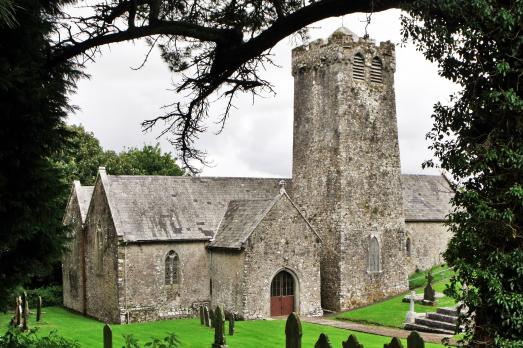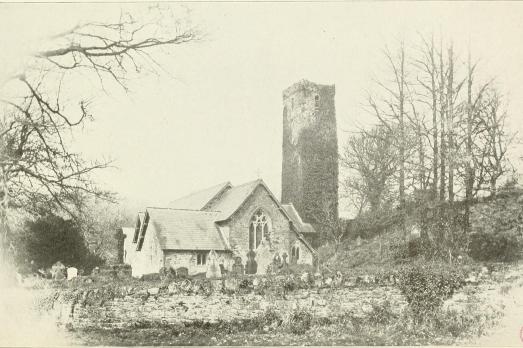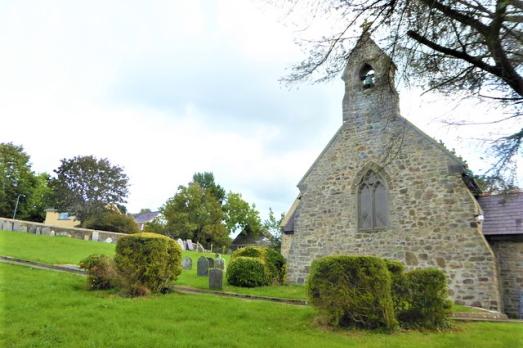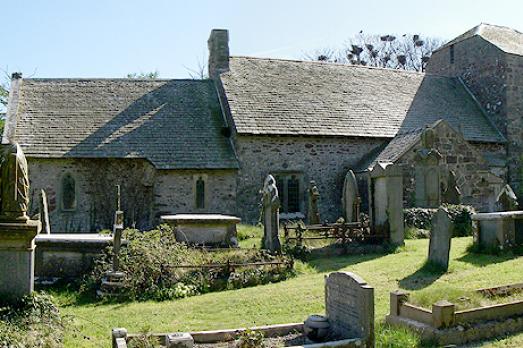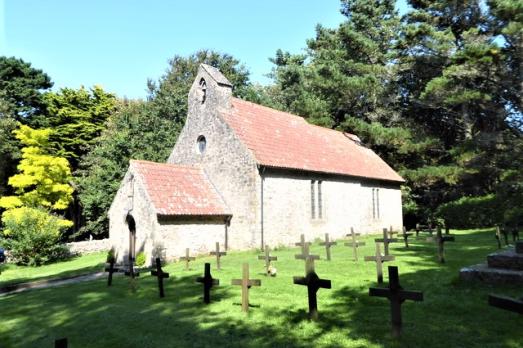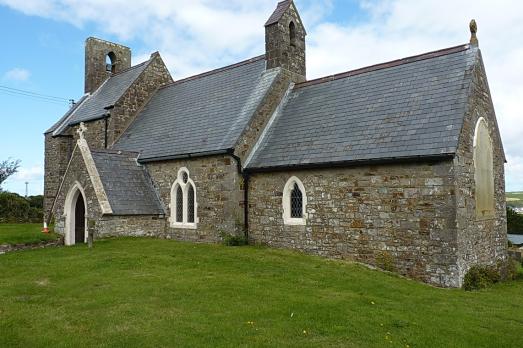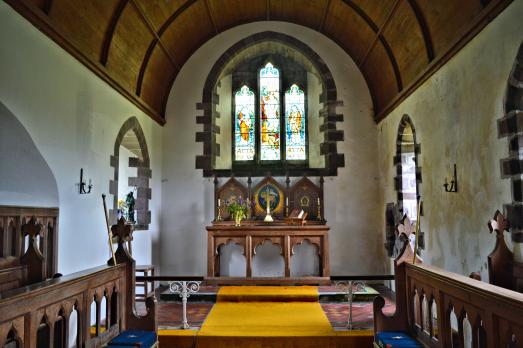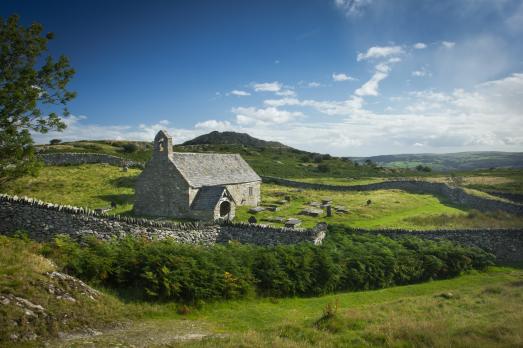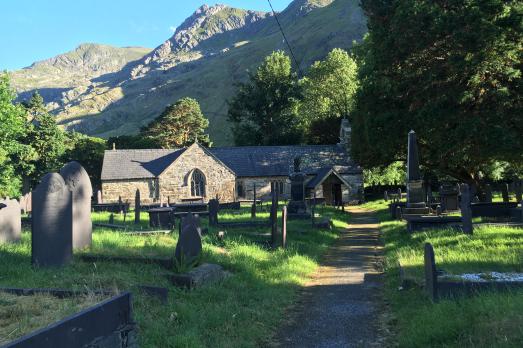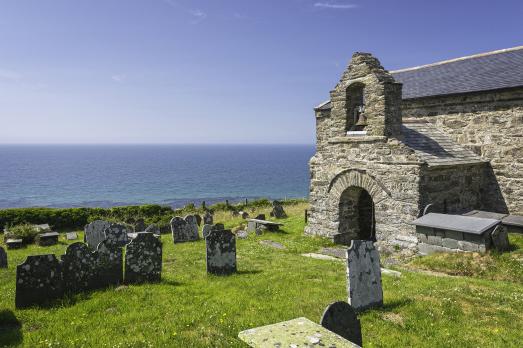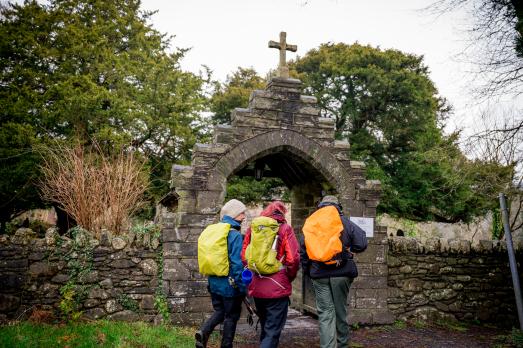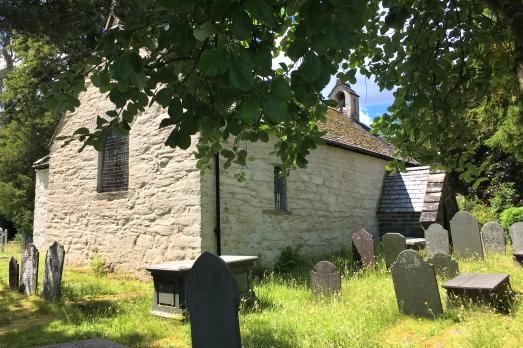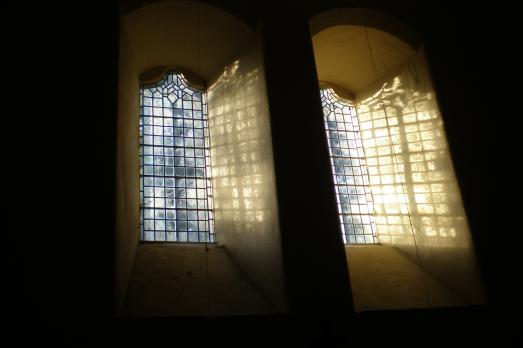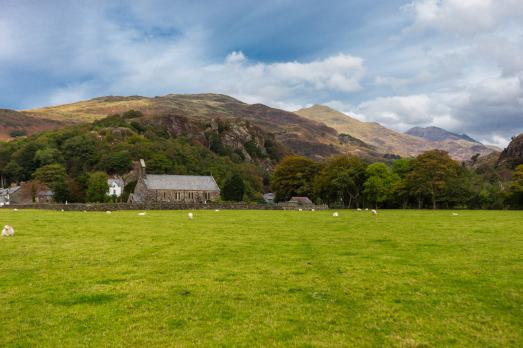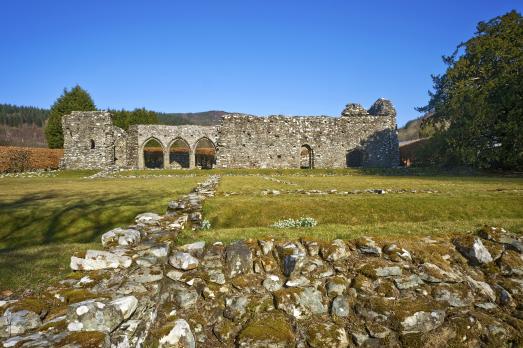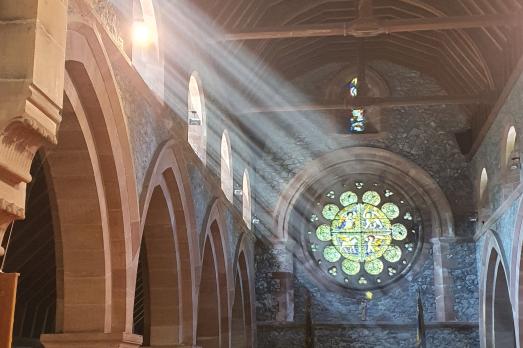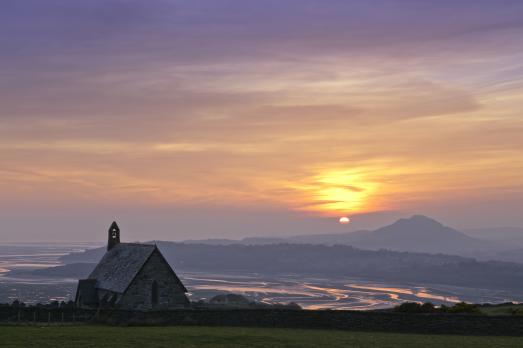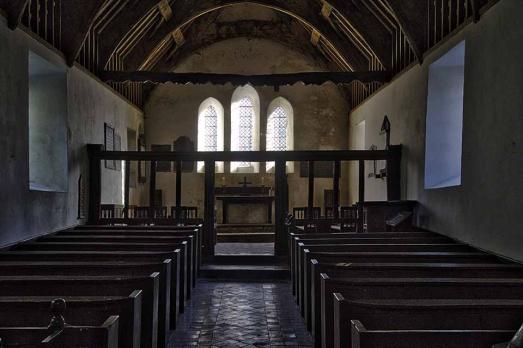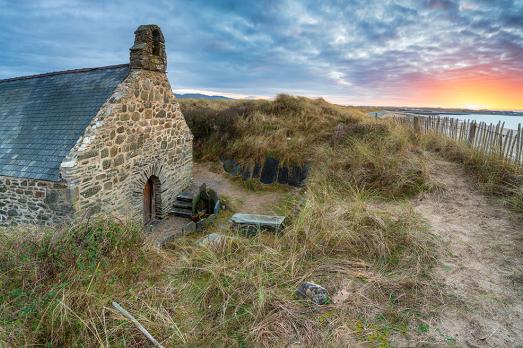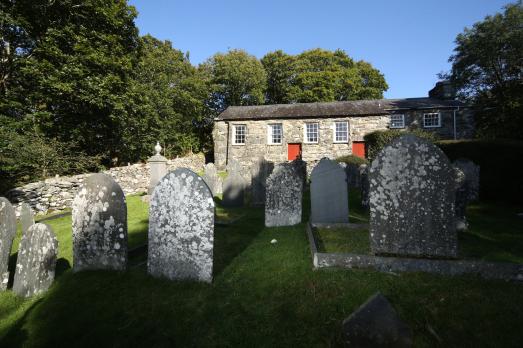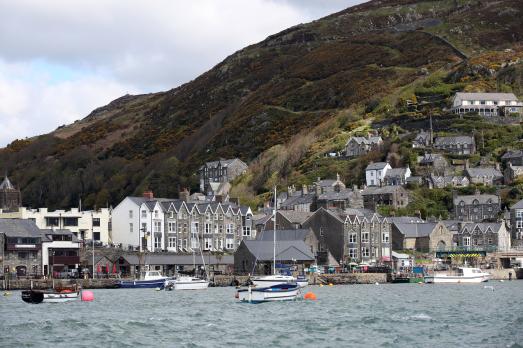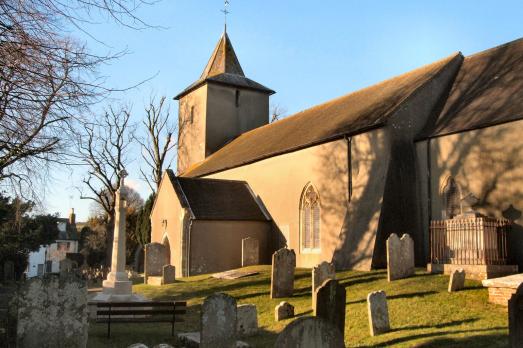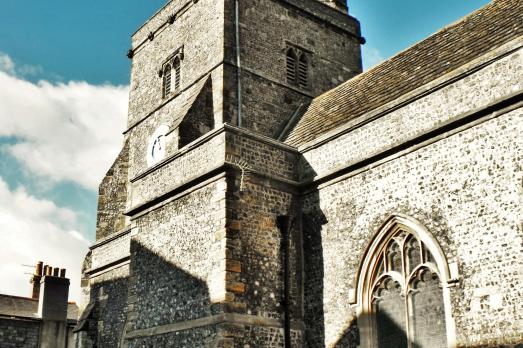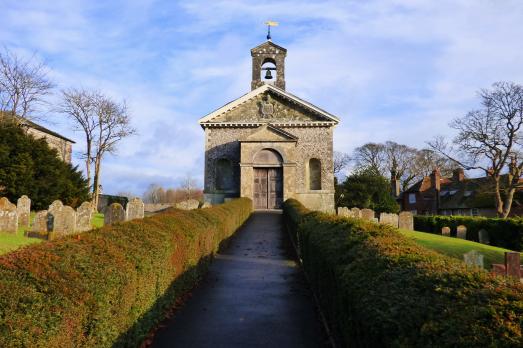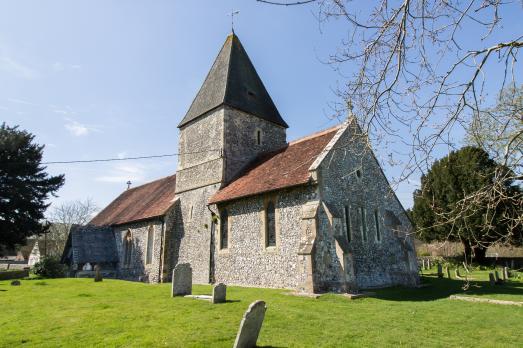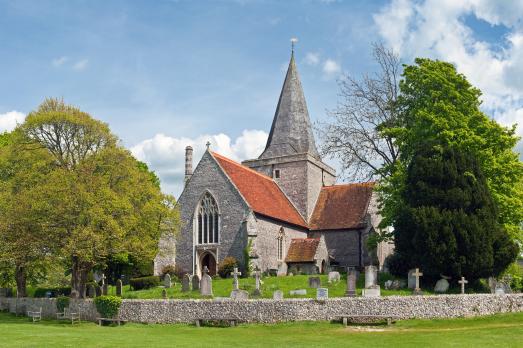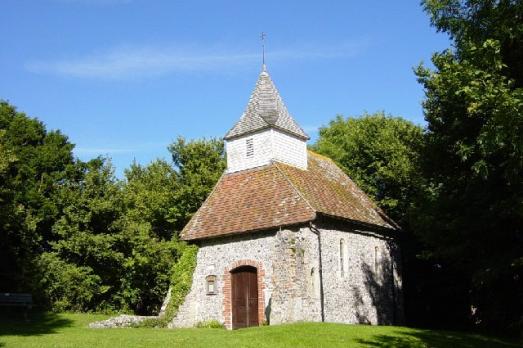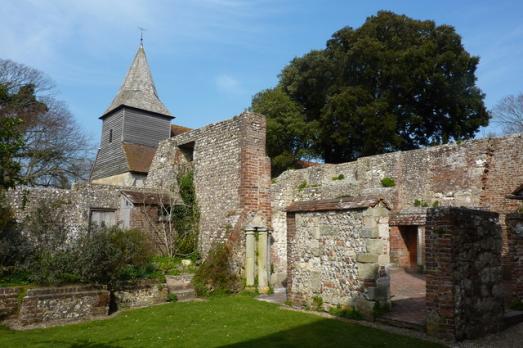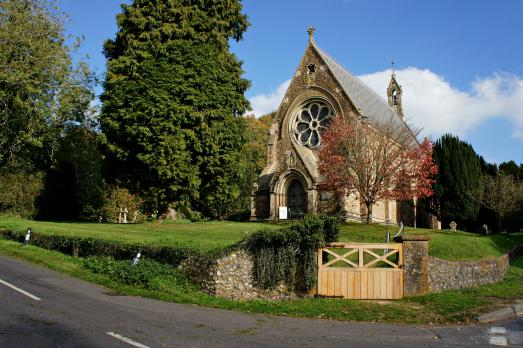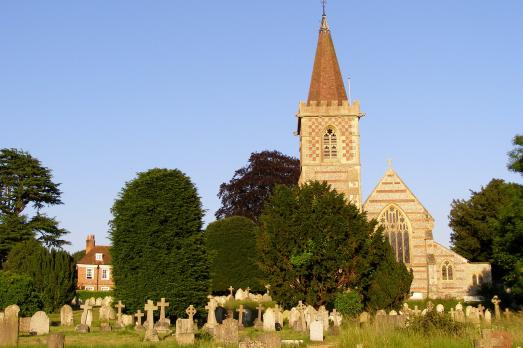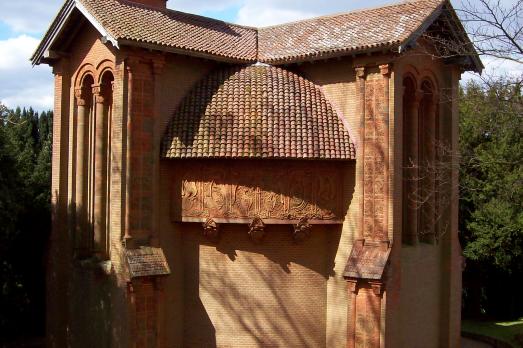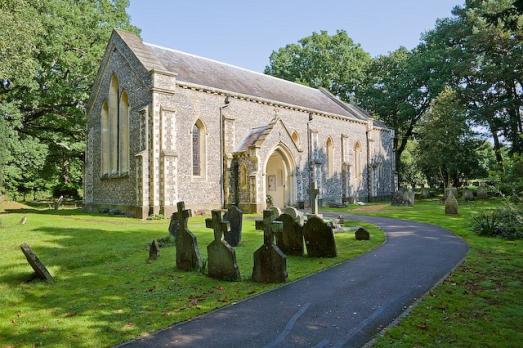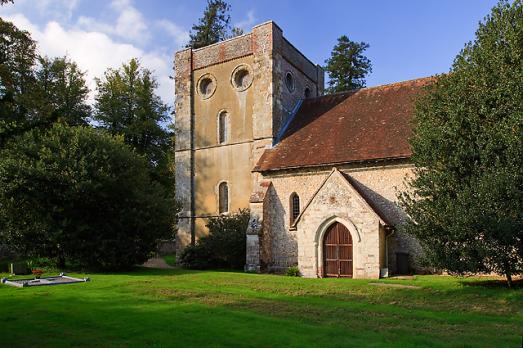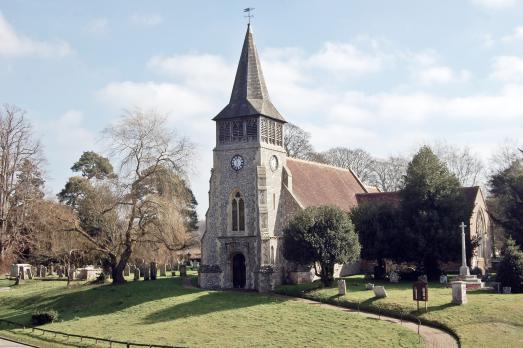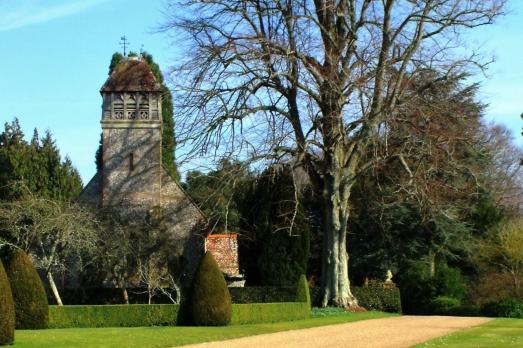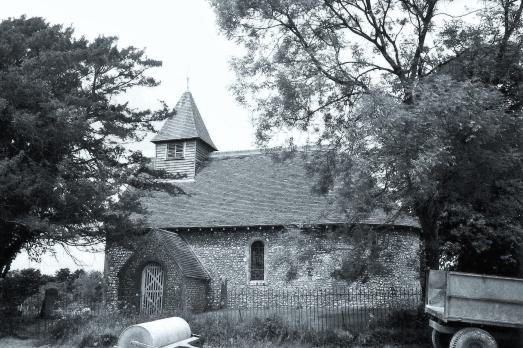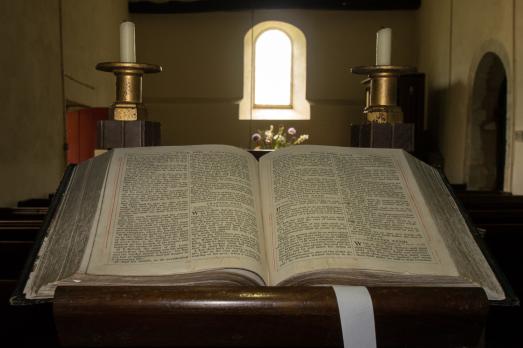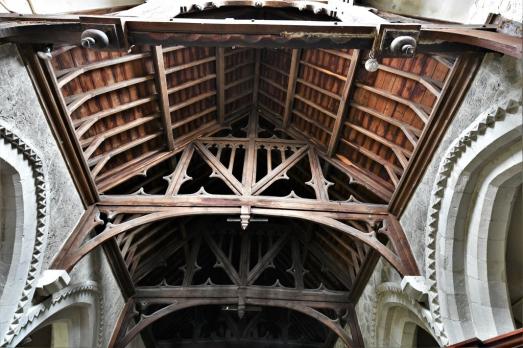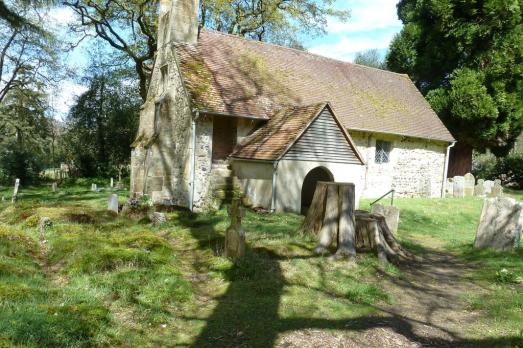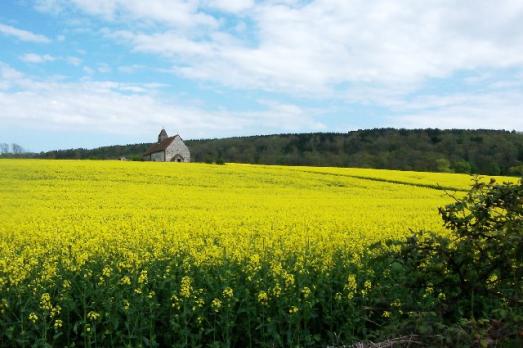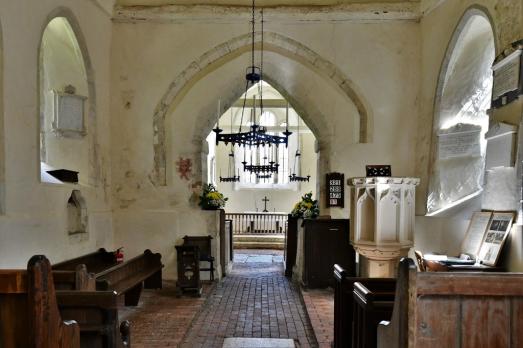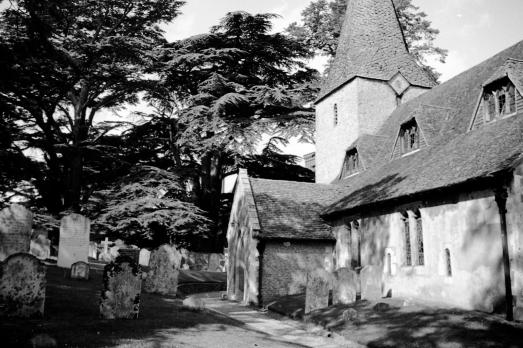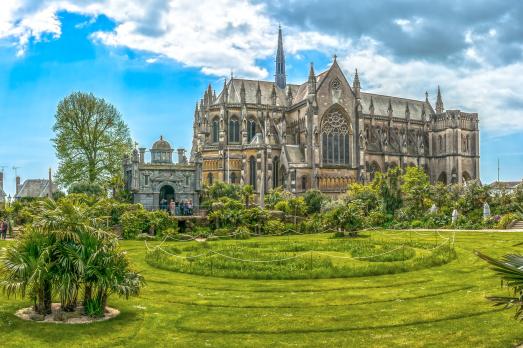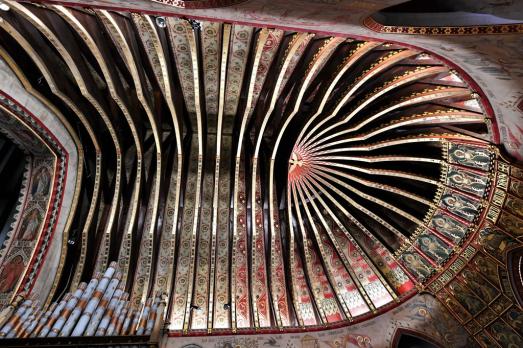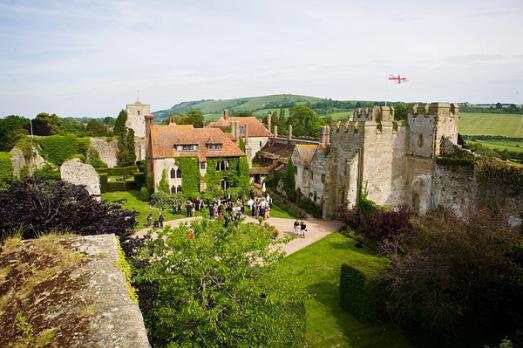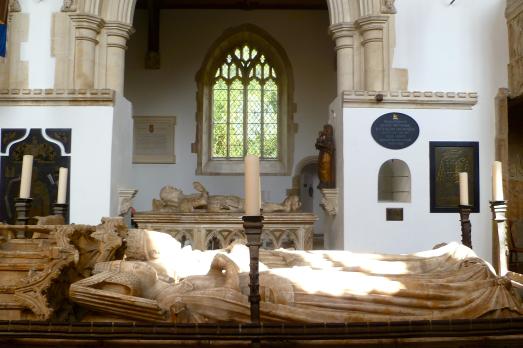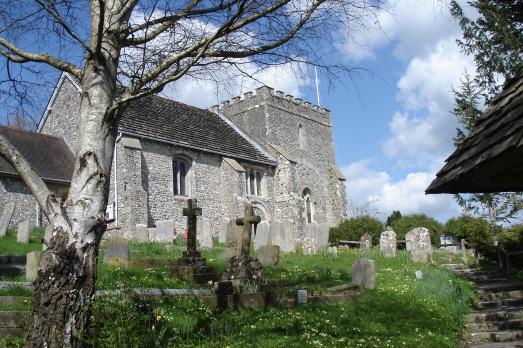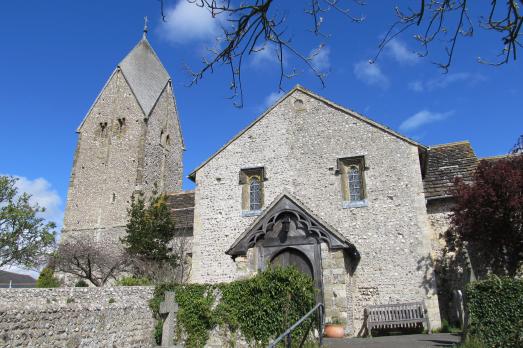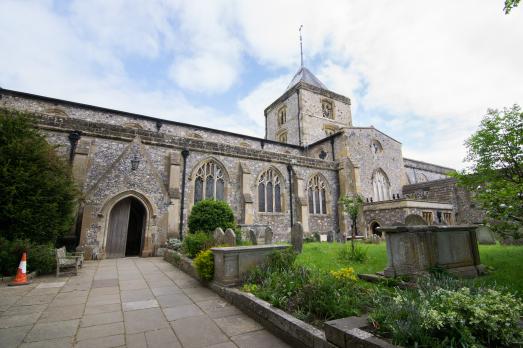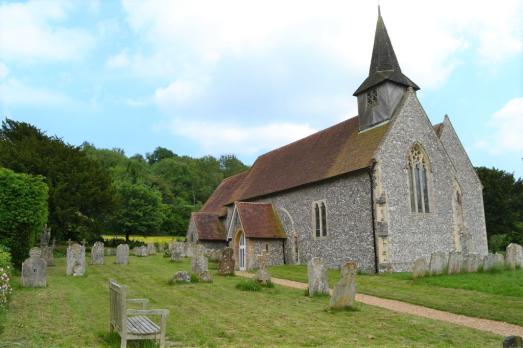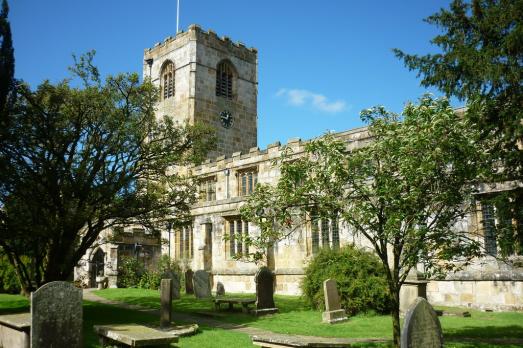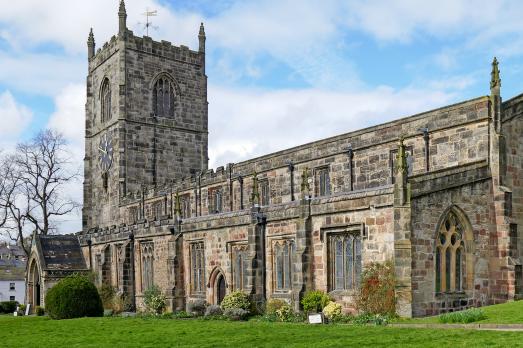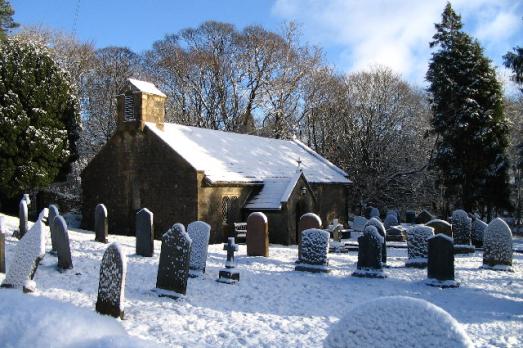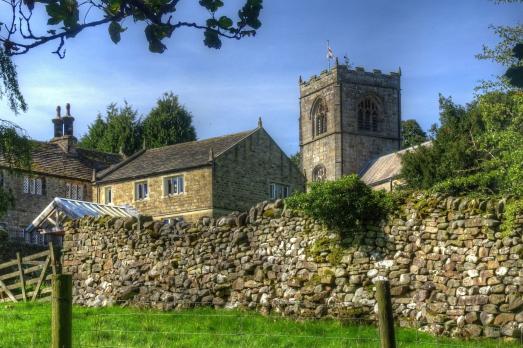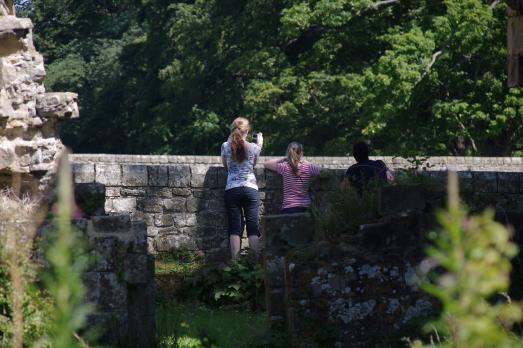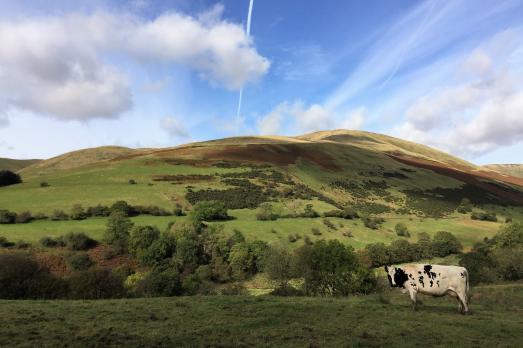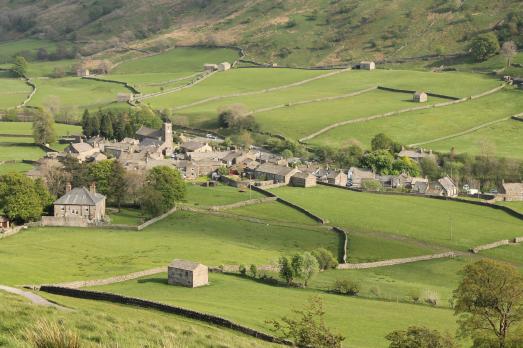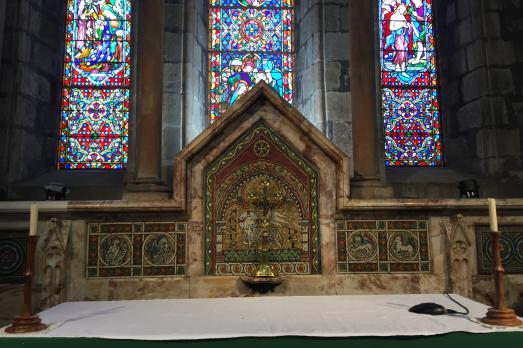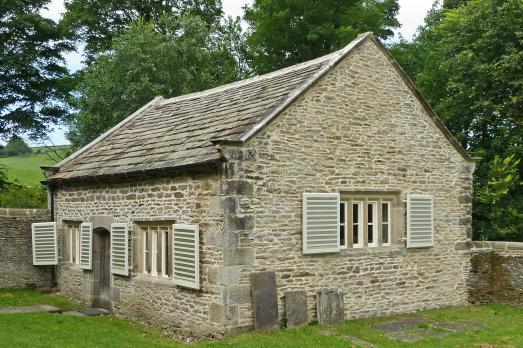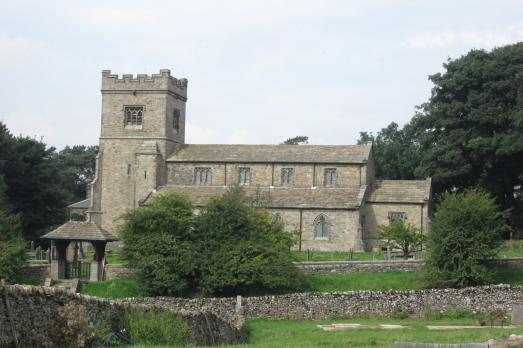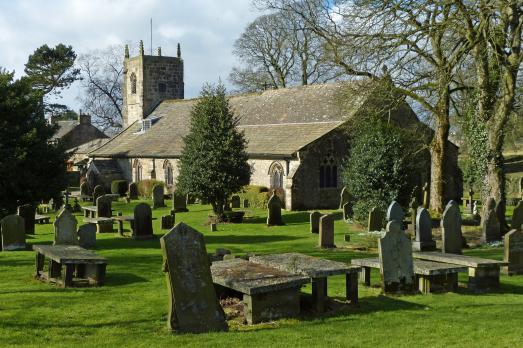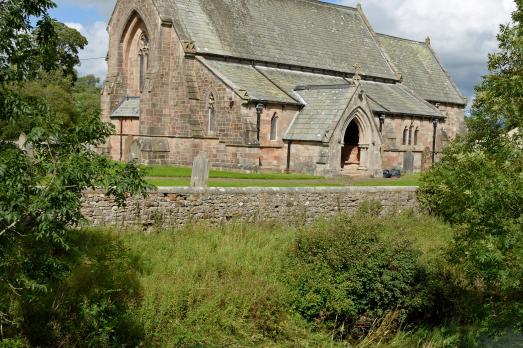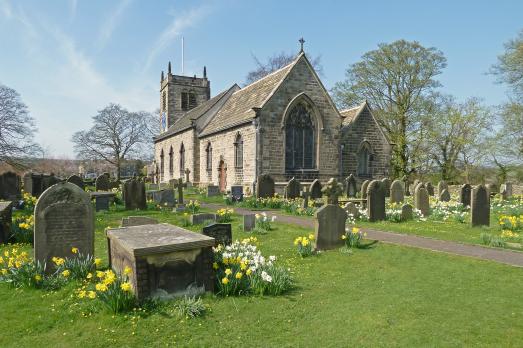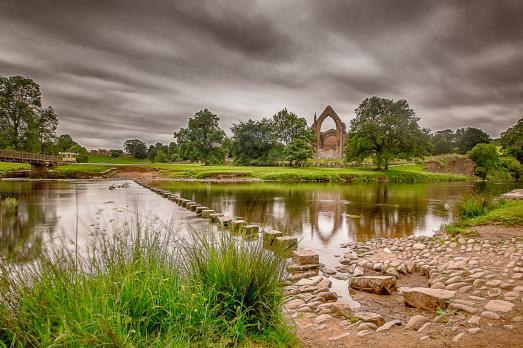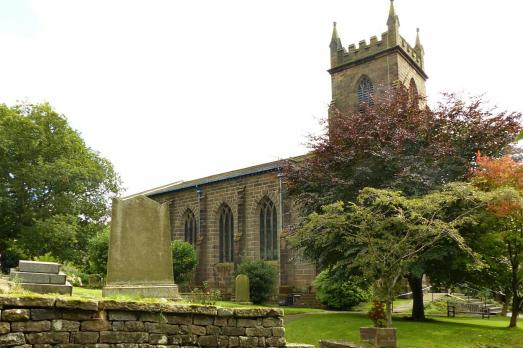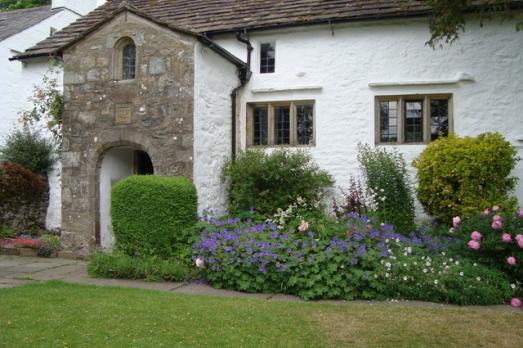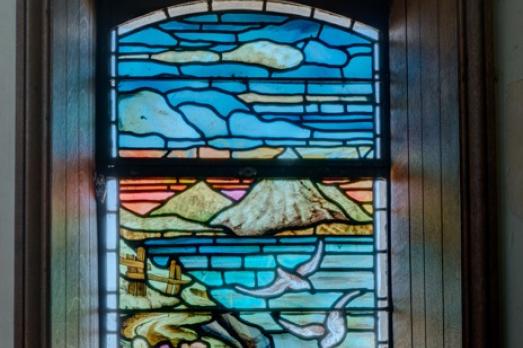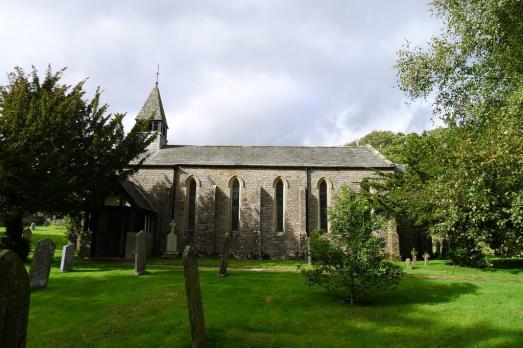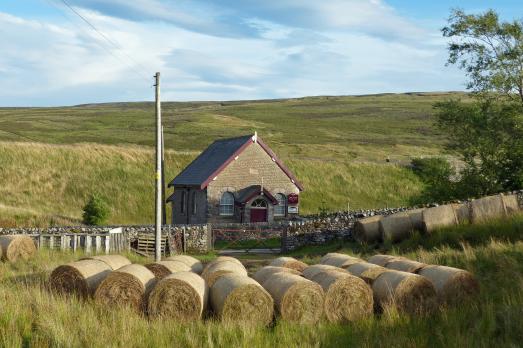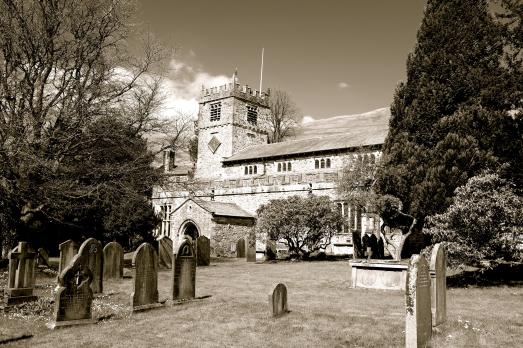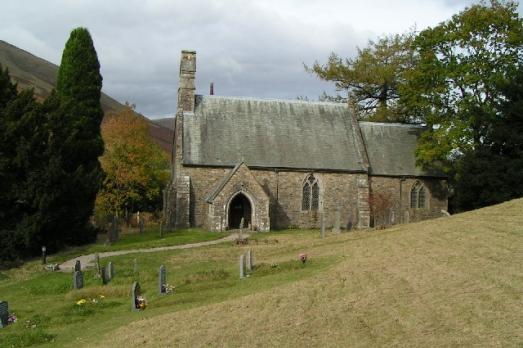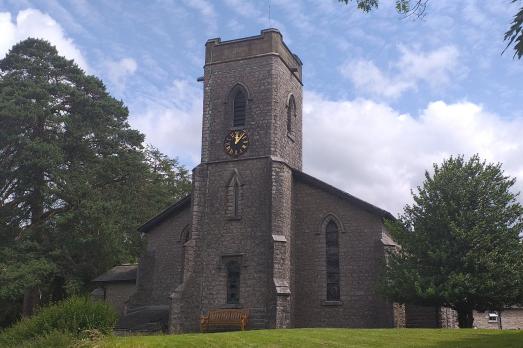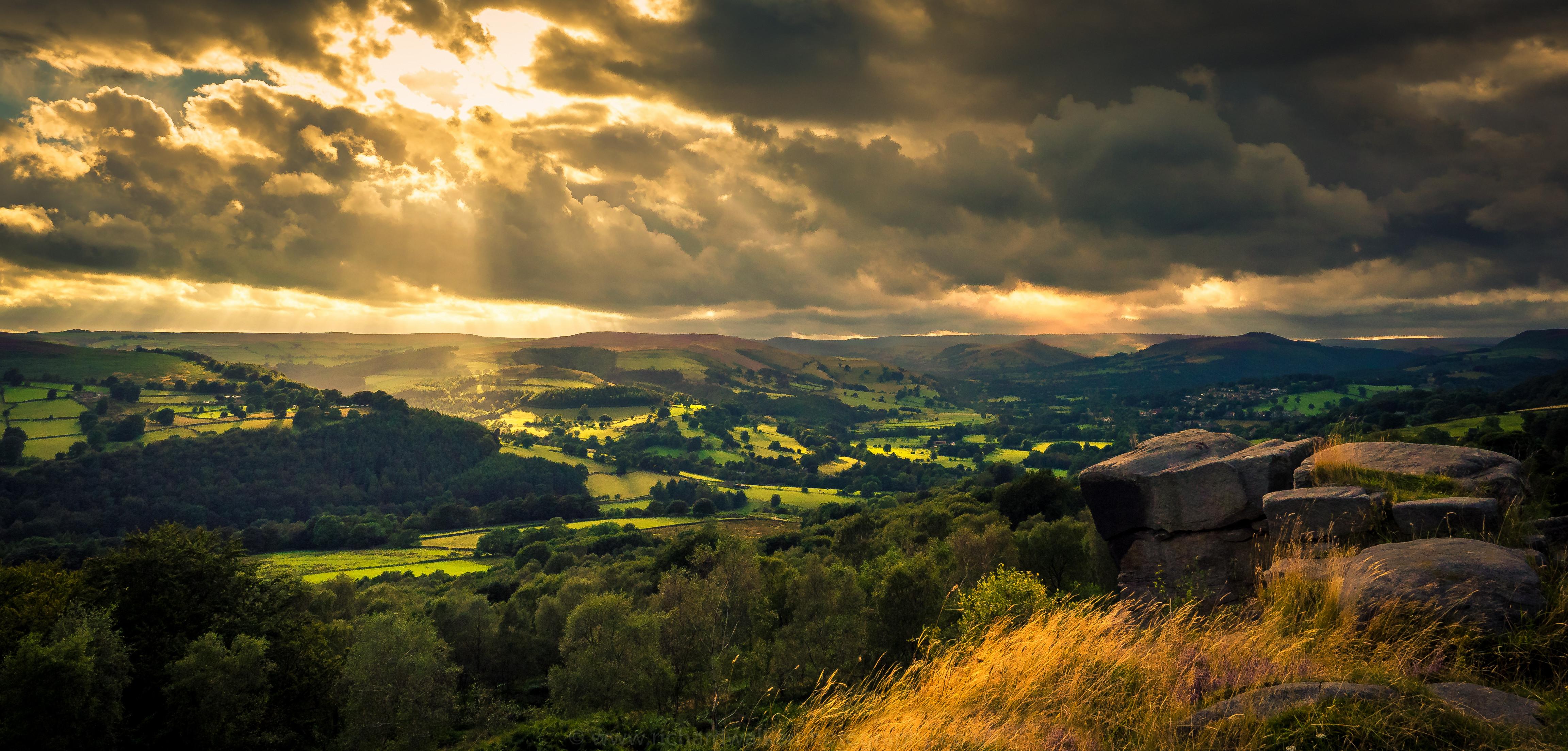
National Parks
Incredible churches in wild landscapes
by Sarah Crossland, Engagement Manager
Spring 2021 saw the 70th anniversary of the designation of the Peak District as the UKs first National Park, on 17 April 1951. Winter 2024 sees the 75th anniversary of the royal assent of the National Parks and Access to the Countryside Act 1949, which led to the formation of our beautiful National Parks.
From the rugged wilds of the Cairngorms in Scotland and the ancient woodlands of the New Forest in southern England to the golden shores of the Pembrokeshire Coast in Wales, all of our National Parks are truly special places. Here we visit each, in alphabetical order, seeking out churches in each park.
Discover beautiful churches in our most breath taking and treasured landscapes.
Brecon Beacons
Discover heather clad mountains, loved for big green open spaces which offer miles and miles of wonderful walking, rugged cycling trails and incredible dark sky stargazing. The Brecon Beacons National Park also boasts a year round programme celebrating all that’s good about food and drink, with stalls from local producers and free musical entertainment.
Our must see
For a real wow moment, open the door to Plough Chapel. Built in 1841, in classical style, this chapel in Brecon is a time capsule; with its beautifully constructed interior, fine detailing and incredible auditorium qualities. This is chapel architecture and some! We love the numbered pews and the lovingly polished woodwork. A friendly welcome is guaranteed here, and a secret histories tour followed by a Welsh tea with chapel members is a must.
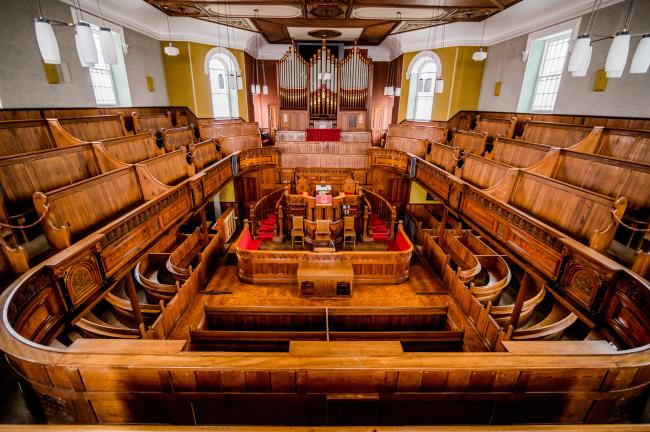
Our other highlights
Brecon Cathedral welcomes everyone who passes through, if you are visiting as a tourist, come to offer your personal prayers and light a candle, or interested in history, architecture or stained glass windows. It started life in 1093 as a Benedictine Priory, built by the Normans on the site of an earlier Celtic church. Although a building of relatively modest proportions, the Cathedral is set in a walled close, unique in Wales, and surrounded by former monastic buildings.
Reached along tiny, winding flower filled lanes (or by footpath), the medieval pilgrim church of St Issui, Patricio sits on a south facing slope looking over a tiny valley to the slopes of the Sugar Loaf mountain. In the 6th century an early Christian hermit named Issui, or Ishow, founded a cell here on a sloping hillside beside a stream. The stream fed a well from which the hermit drew water. You can still see the well, just a short walk downhill from the churchyard and easy to spot, with strips of colourful cloth tied to branches of nearby trees.
A wealth of historic material remains, including a superb late 15th century wooden screen, made of Irish bog oak and intricately carved. Look for figures of a fire breathing dragon, St Mary the Virgin, and St John the Apostle. On the west wall is a Doom, or wall painting depicting the Biblical Day of Judgement. Even more impressive is the striking figure of Time, in the form of a skeleton, holding the traditional scythe and hourglass, as well as a spade. The meaning would have been clear, even to a largely illiterate population; your days are numbered, so use them wisely. According to legend, the painting has been covered with whitewash several times but each time it mysteriously reappears.
Set in the hidden valley of the Honddu river, with the Black Mountains to the west and the great ridge carrying Offa's Dyke to the east, Capel y Ffin melds art and landscape seamlessly. A tiny church nestled amongst seven enormous yew trees, the whole ambience is of calm and quiet holiness. According to legend a vision of the Virgin Mary appeared to a Norman lady whilst she was in the field where the church now stands. Inside there is a tiny gallery and an ancient font. Capel y Ffin is in a dark sky area, the perfect spot to experience the night sky like never before.
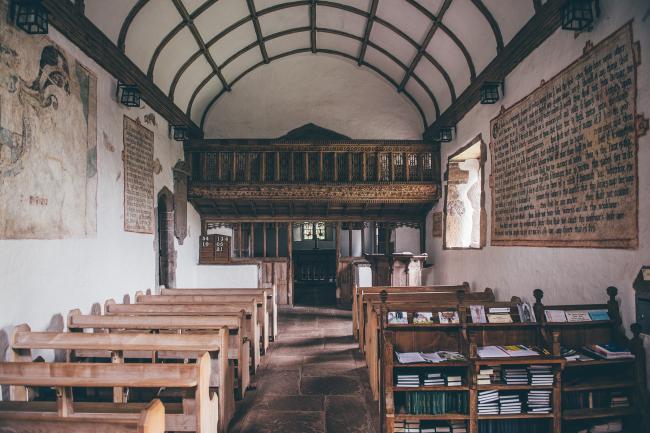
Broads
Explore idyllic waterways, gaze at the big skies and spot some of the UKs rarest wildlife in The Broads National Park. Norfolk is possibly most famous for the man made Broads, over 125 miles of navigable lock free lanes set in beautiful countryside and studded with charming villages. Heritage churches are a vital part of the landscape, visible evidence of Christian heritage that stretches back to the 7th century.
Our must see
St Helen, Ranworth attracts visitors from all over the world. The Cathedral of the Broads (as it is otherwise known), is famous for its remarkable screen, a masterpiece made in about 1450. It stretches the entire width of the church, and the figures on it include the Twelve Apostles, St George, St Mary, John the Baptist and other saints.
Pilgrims, sailors, church lovers and families visit on summer days and this grand church offers a wonderful welcome to all.
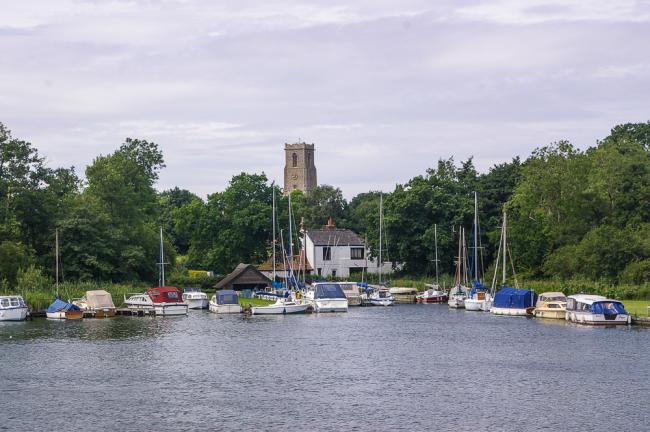
Our other highlights
Discover something truly unique at St Catherine, Ludham. The carved 15th century font includes figures of 'woodwoses', a sort of wild men of the woods. But here, one is female!
This is a large and impressive church, due to the wealth of the nearby Abbey and its location in an area of rich arable and pasture land. It has a fine late medieval painted chancel screen (something you'll get used to looking out for in Norfolk) and a painted rood in the tympanum which is very unusual and is now thought to date back to Henry VI. Explore a virtual tour here or join a guided tour, which also visits a nearby water garden.
St Michael, Beccles goes way back to about 1350 and was built by the Abbott of Bury St Edmunds no less. Long before that, there was a Saxon church with fascinating links to the herring trade. Step inside the vast nave and be drawn eastwards through a lovely carved screen to the magnificent east window. Admire the oak choir stalls with their exquisitely carved ends. Note the early 16th century tomb of Norwich mayor John Rede with its intriguing row of 10 children and find out what happened to the 11th figure.
If you're harbouring a hidden seafarer, you'll love that Lord Horatio Nelson is strongly linked to this church as his parents were married here!
For literary lovers, discover the church Charles Dickens used as the scene for the opening chapters of David Copperfield. St Mary the Virgin, Blundeston is much as Dickens would have known it.
‘I was born at Blunderstone, in Suffolk. There is nothing half so green as I know anywhere, as the grass of that churchyard; nothing half so shady as its trees; nothing half so quiet as its tombstones. The sheep are feeding there, when I kneel up to look out. Here is our pew in the church. What a high backed pew! With a window near it, out of which our house can be seen’ : David Copperfield by Charles Dickens
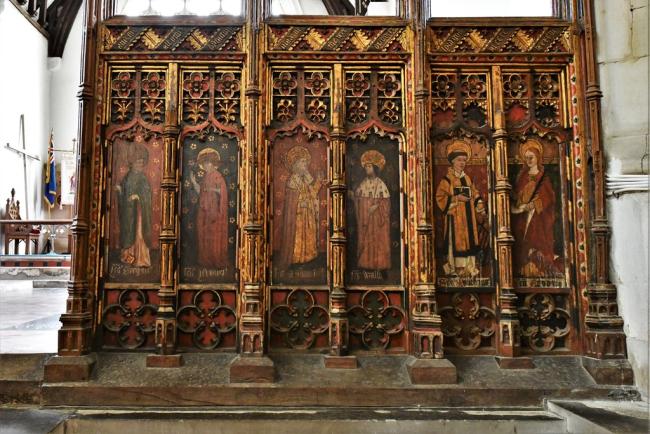
Cairngorms
Experience the UKs highest mountain range, explore ancient pine forests and become immersed in the Scottish wilderness. Cairngorms National Park is the home to some of the most unique animals and plants in the UK, it's also home to some gorgeous churches.
Our must see
Crathie Church overlooks the River Dee and the ruins of an earlier 14th century church.
From 1848, Crathie Kirk has been a place of worship for Queen Victoria and every British monarch since. Queen Victoria laid the foundation stone of the present church in 1893, she also donated two stained glass windows and Princess Beatrice donated four bells which still hang in the bell tower. Queen Victoria's personal attendant, John Brown was buried in Crathes Kirk graveyard, along with others who served here. Some have headstones with personal epitaphs from Victoria, it's a fascinating place to explore.
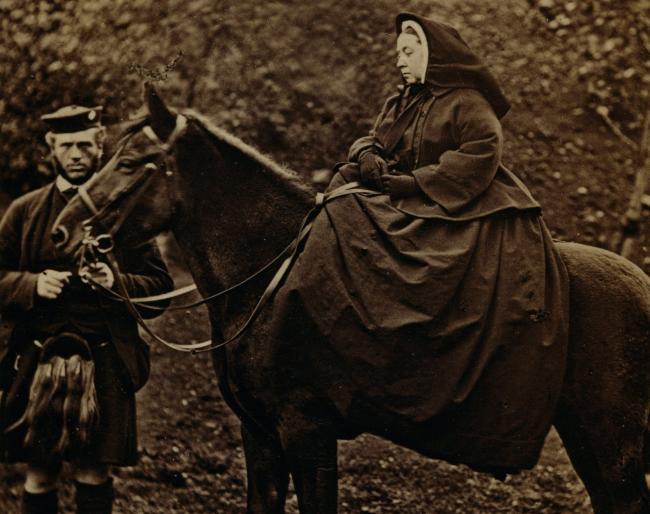
Our other highlights
In the mid 19th century some of the congregation left their parish church in Kincraig, to hold their own services in the open air in Insh village. A reader called Donald Cattanach walked every Sunday from Glen Banchor in Newtonmore to lead their worship in the village. A local woman wove a plaid to protect the reader and his bible from the weather, you can see it in Kingussie Folk Museum. Eventually the landowner built them a small, tin roofed church.
Follow in their footsteps to this tiny whitewashed gem, Insh Village Church.
Dartmoor
Discover wild open moorlands, iconic granite tors, ancient monuments and rich local history in the south of England. The story of Dartmoor's cherished and protected landscape and wildlife is one of powerful geological forces, relentless weather and more than 10,000 years of human activity. The atmosphere at Dartmoor National Park is truly unique.
'I have never before, in my long and eclectic career, been gifted with such an abundance of natural beauty as I experienced filming War Horse on Dartmoor' : Steven Spielberg
Our must see
An iconic landmark, St Michael de Rupe, Brentor was founded in 1130 by the local landowner Robert Giffard and is the highest working church in England. Even when thick moorland fogs descend, this is an eerily beautiful place. The church is 1,110 feet above sea level on an ancient volcanic cone (rare in Devon). The church is surrounded by an Iron Age hill fort.
The stunning view of and from the church is well worth the walk!
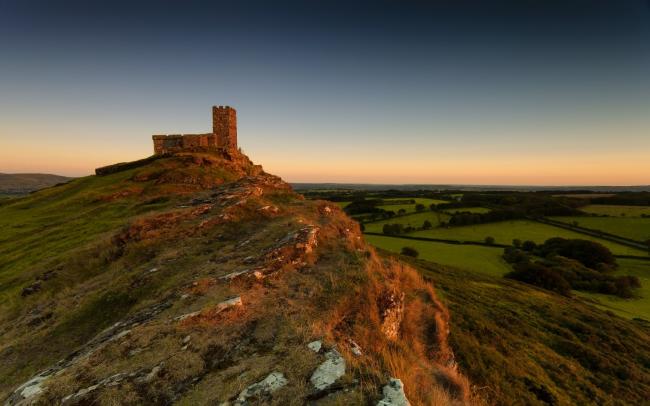
Our other highlights
Nestled in the shadow of Dartmoor, in a beautiful wooded valley beside the river Dart, Buckfast Abbey is a working, self sufficient, monastery offering visitors a tranquil refuge from the hectic pace of everyday life.
The church is surrounded by gardens which in the summer come alive with colour. Spacious lawns and three specialist garden areas are maintained for pleasure and relaxation: a lavender garden, a physic garden and a sensory garden.
Head to St Michael, Ilsington to discover the finest collection of floor ledger stones of any Dartmoor church. The font is ancient and typical of Dartmoor. The prosperity at the end of the 15th century, largely due to the wool trade and tin mining, so if; you love industrial heritage combined with rare beauty this may be the church for you!
St Pancras, Widecombe in the Moor is the centrepiece of the village and is very obvious from any direction. In October 1638 the church and tower were seriously damaged by a severe thunderstorm. A number of people were killed and many were injured. A record of The Great Storm can be found on boards affixed to the wall close by the west door and local superstition as to what really happened is graphically detailed and a fascinating read!
'I could hardly think of a better example of a church enhancing its landscape (and vice versa) than this treasure in the exquisite village in Dartmoor, Devon. At 120 feet its tower is one of the most striking on a country church anywhere in the country' : Bill Bryson
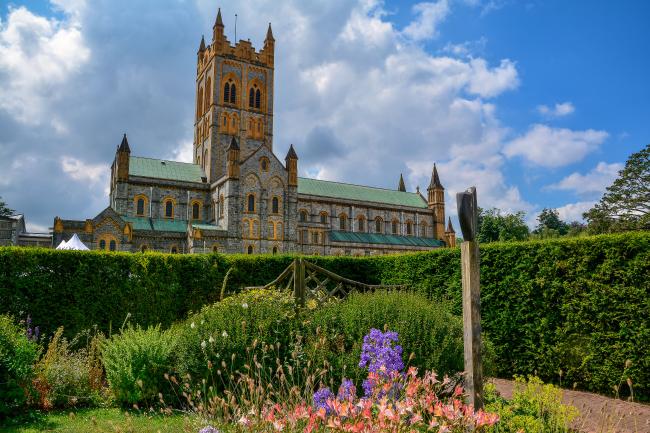
Exmoor
A unique mosaic of expansive moorlands, woodland valleys, rolling hills and dramatic coastline makes up Exmoor National Park. One long story of how people have tried in different ways to live on and around the moor , they traded, travelled, worshipped, and buried their dead.
Our must see
The unique gleaming lime and tallow washed walls of All Saints, Selworthy overlook Exmoor. They give a foretaste of the wonderfully light and spacious feeling interior, with its slender white pillars and soaring wagon roofs.
The churchyard is the perfect spot for a picnic, or to just stand a take in the amazing panoramic view!
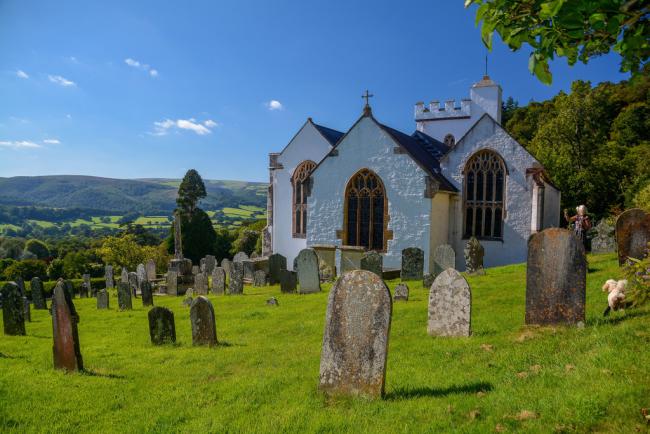
Our other highlights
The first record of the tiny church of St Beuno, Culbone in the Domesday Book. It is probably of preNorman origin, although it has been restored many times it still has its original Saxon font. The church is considered to be the smallest in England, seats about 30 people and is very atmospheric as it is lit by candlelight. It can't be accessed by road, so you'll need to park on a narrow track and then walk a mile and a half through woodland before the church appears. It's a really magical experience!
Have you ever wondered why so many churches retain a screen between the chancel and the main body of the nave? It's often to separate the part of the church originally also used for other activities, but at St George, Dunster this was taken to extremes.
An uneasy truce between priory and parish was formalised in an agreement of 1357: the townsfolk used the west end, while the monks worshipped at a separate high altar at the east end. This continued for over 200 years, until the original reason was well out of living memory and the priory was dissolved by Henry VIII. The most notable feature inside is the astonishing screen, dating from 1498 and built midway down the 'town' part of the church, to separate the parish nave from its choir and sanctuary. It's well worth taking time to look closely at the exquisite carving.
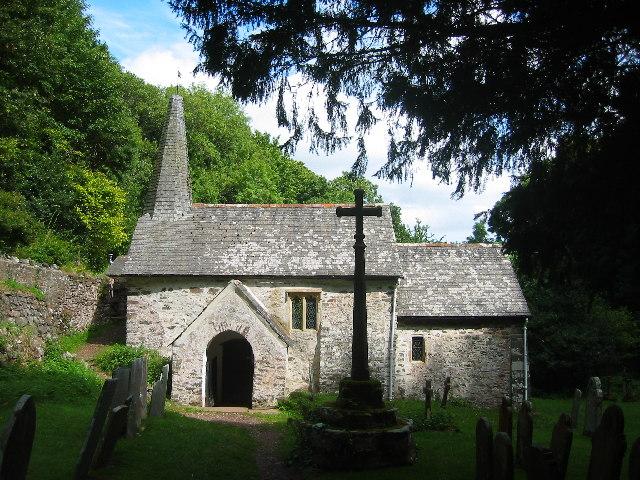
Lake District
An awe inspiring landscape of high fells, deep glacial lakes and quaint rural villages, now a World Heritage Site. Visiting the Lake District National Park is one of the most popular breaks for people across the UK and from further afield, its churches are nothing like those found in other parts of the country.
Our must see
St Oswald, Grasmere is well known because of its associations with the great Romantic poet William Wordsworth, who lived in nearby Dove Cottage and is buried in the churchyard.
It is named after St Oswald, a 7th century Christian king of Northumberland, who is said to have preached on this site and still celebrates its Rushbearing Festival, a custom dating back to the days when the earthen floor was strewn with rushes, both for warmth and cleanliness.
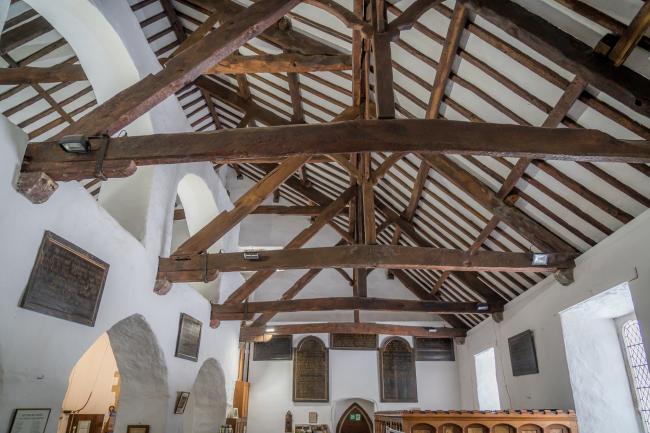
Our other highlights
Visible from miles around that spire of St Mary, Ambleside nestles into the beautiful landscape of the heart of the Lake District. A mile inland from Windermere lakeshore, this is a starting off point for many walkers exploring the national park.
To the west end of the church there is a unique wall painting of the ancient Rushbearing Ceremony, which is still performed every July. The mural was painted by students of the Royal College of Art evacuated to Ambleside during the Second World War and depicts the ceremony in 1944 with many local characters holding the traditional ‘bearings’. These are shapes of harps, crosses and staves among others forms, made out of rushes and entwined with flowers.
You will find good walking around St John the Evangelist, Helsington. Built in 1726, the church commands extensive views across the Lyth valley towards the distant Lakeland fells and Morecambe Bay. The churchyard is a tranquil place to sit awhile, in spring a carpet of snowdrops, then daffodils and later wild flowers.
But, don't forget to pop into the church itself. You will be immediately struck by the east end painting. Twelve female angels kneeling in a valley landscape face the figure of Christ depicted in the stained glass window. Painted in 1919 in oils on canvas stretched on wooden battens, the picture is a memorial to all who fell in the Great War.
Once you're up in the fells, a visit to the always open St Martin, Martindale is a must. The 'Old Church' was built in the 1660s on the site of a probable earlier chapel dating from 1220 and before that a a pagan site. Items of interest include the yew tree which is over 1300 years old, a reading desk dating from 1634, the font which is believed to be part of a Roman altar and the tiny bell with inscrutable Lombardic characters no one can decipher.
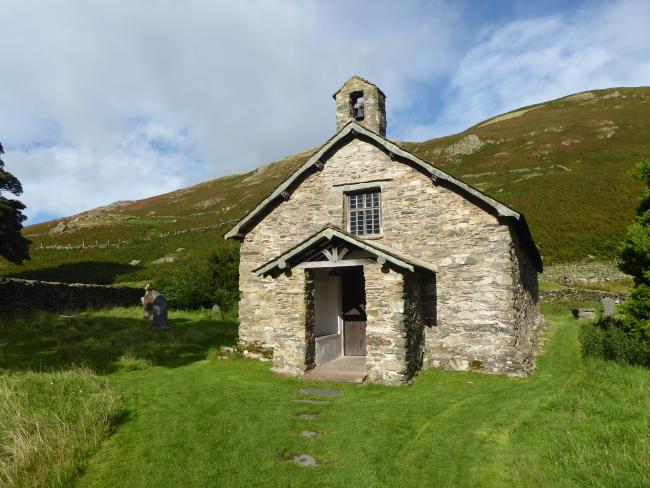
Loch Lomond & the Trossachs
Home to the largest lake in the UK, multiple stunning lochs, extensive forests and dramatic mountain ranges. The dramatic splendour of Loch Lomond & the Trossachs National Park has shaped a wealth of cultural heritage, myth and folklore and larger than life characters throughout the ages.
Our must see
For over 1500 years a church has stood on the banks of Loch Lomond. The buildings at Luss Parish Church may have changed over time but the outstanding beauty of the area hasn't. With the loch and Ben Lomond right on our doorstep, we boast one of the most scenic locations for a church.
Luss is home to around 250 people but receives some 750,000 visitors each year, many of them wanting to visit the church.
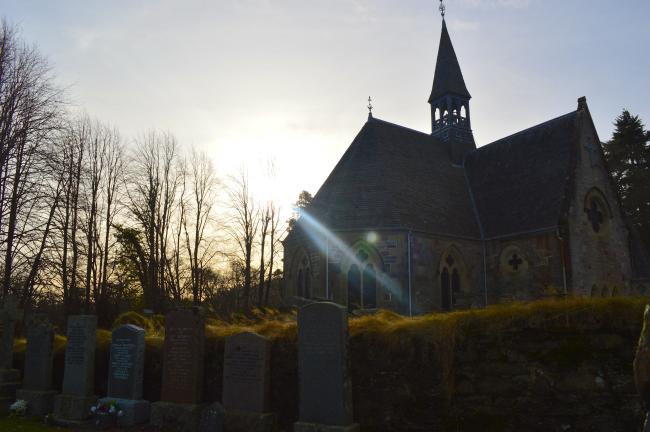
Our other highlights
This area is home to two of the smallest churches in Britain.
With its clean white paintwork and bright blue door, Colintraive Church stands as memorial to a remarkable young woman called Janet Campbell. She was the driving force behind the creation of the church in 1840, thanks to her concerns over the safety and spiritual wellbeing of the workers on her husband’s estate. Janet died just seven weeks after the first service was held.
Completely different is St Fillan, Killin. Built in 1876 by the Earl of Breadalbane for private use by shooting parties, the church earned the name Grouse Church among locals. It has been in almost continual use since then. This tin tabernacle was bought in kit form from a manufacturer, likely to be the London Iron Church and Chapel Company, in which the Earl held shares.
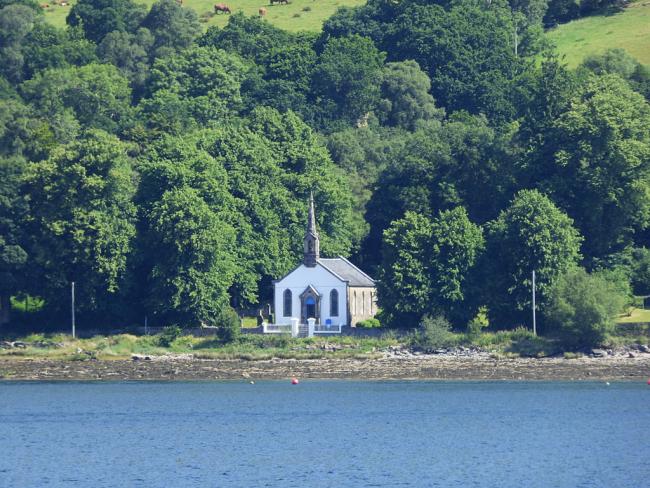
New Forest
Marvel at the endless woodlands, wild heathlands and roaming ponies, cattle and sheep of the truly unique landscape in the New Forest National Park. You can also explore pretty villages in the heart of the forest or bustling seaside towns. With even a page about churches in the park, there's truly something for everyone.
Our must see
St Michael & All Angels, Lyndhurst is recognised as housing a world class collection of art including the Leighton fresco stained glass by Burne-Jones, Rossetti, Kempe, Clayton & Bell, and William Morris. If you want to fall down the rabbit hole, or even through the looking glass, the church is also world famous for being the final resting place of Alice Hargreaves, better known as Lewis Carroll’s ‘Alice in Wonderland’.
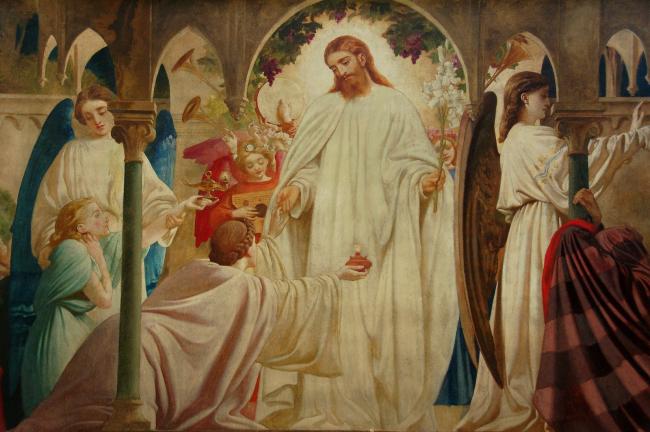
Our other highlights
The forest crowds up to the churchyard at All Saints, Minstead and yews and oaks overhang the lychgate.
From the outside, the little church looks rather like a cottage with extensions added willy nilly. The informal feel is reinforced inside with an enchanting jumble of seats, private pews and galleries dating from the 17th and 18th centuries. It's a wonderful place to discover.
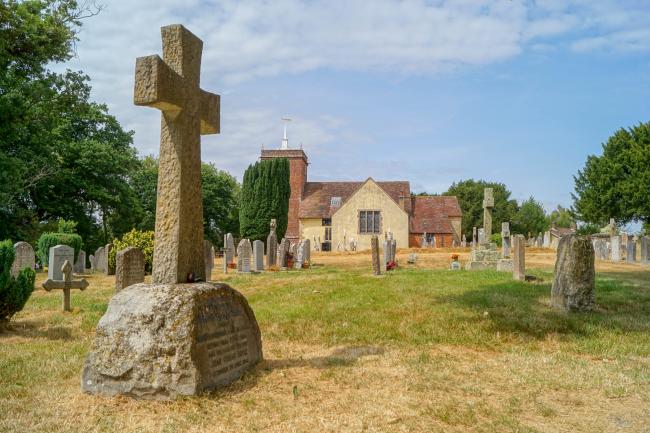
Northumberland
Enjoy fascinating ancient monuments, tranquil rolling moorland and the beautiful uplands of the Cheviot Hills. History buffs will feel right at home here in Northumberland National Park. Will you delve into our Roman or Reiver past?
Our must see
In a tiny village on the edge of the park, St Michael & All Angels, Alnham has seen some troubled times. It is believed that the original church was built on the site of a small Roman camp, which most probably was used as a centurion’s guard to protect their herds of cattle when grazing during the summer in the rich pastures on the bank of the river Aln above Whittingham.
The church also has connections to the gunpowder plot of 1605 and is clearly mentioned in a formal written document of 1597 between Henry, ninth Earl of Northumberland and his cousin, Thomas Percy, one of the leaders of the plot.
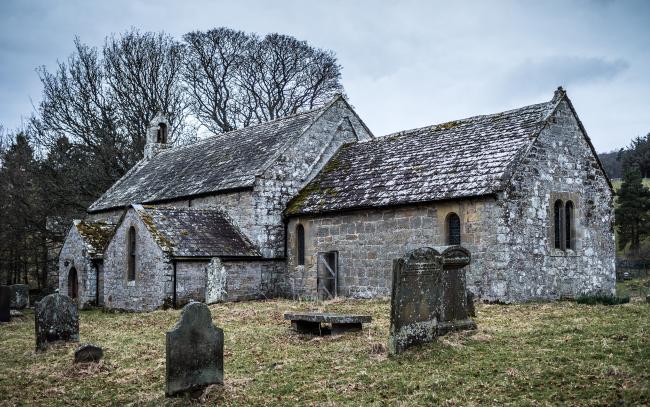
Our other highlights
People have lived in the vicinity of St Mungo, Simonburn since prehistoric times, there are rock carvings nearby. The church is 13th century, on the site of an earlier 8th century one, with strong associations with Saint Mungo (also known as Kentigern). In medieval times the parish covered the largest area in England.
Rooted in its landscape, St Cuthbert, Corsenside is a remarkable little church, isolated but intimate.
Open to the elements, offering shelter on the hill, Corsenside has a strong claim to be an authentic resting place for the coffin of St Cuthbert (c634-687AD) when the monks of Lindisfarne carried it from Holy Island following Viking raids on the east coast. Simple inside with natural light, St Cuthbert's church is a place to escape pressure, to be quiet in the calm. Inside are intriguing puzzles. Did the chancel arch come from the nearby Roman fort of Habitancum? Is the carved slab opposite the entrance part of a preaching cross or a gravestone or possibly a Celtic representation of the 'Tree of Life'? The churchyard is managed to maintain a range of habitats so that it can be a haven for wildlife.

North York Moors
A place of extraordinary surprises, from wide open moorland and swathes of purple heather to dazzling dark skies and a glorious coastline. Forged by nature, shaped over generations; the North York Moors National Park is a place where peace and beauty rub shoulders with a rich history and a warm welcome.
Our must see
No visit to the Yorkshire coast is complete until you have climbed the 199 steps to visit the old church on the east cliff.
No matter from which angle you approach it you will not be prepared for what awaits you at St Mary, Whitby. Enter into a small low ceiling area, and then open the double doors to a building that takes your breath away. It's much older than the nearby abbey ruins. And that's without even mentioning a certain toothy count...
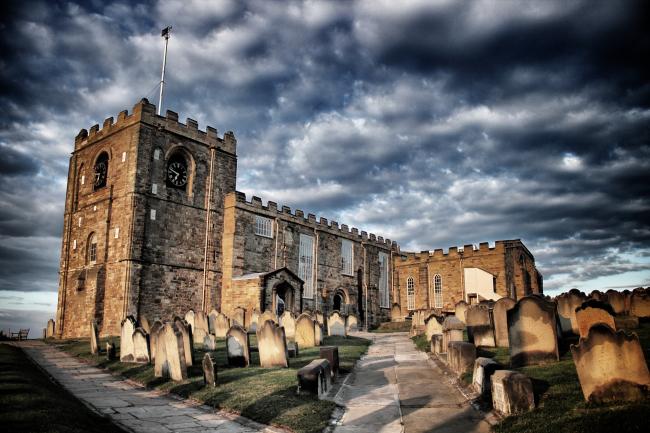
Our other highlights
There has been a place of worship at St Mary, Goathland, in the heart of the national park, for at least eight centuries. The present church was designed by William Brierley of York and completed in 1896. The style is perpendicular, with some Arts & Crafts overtones. Much of the woodwork was made by Robert ‘Mouseman’ Thompson of Kilburn.
Deeper into the park and standing alone in a valley, surrounded by its quiet churchyard with a backdrop of woodland, St Gregory, Kirkdale looks ancient, and it is.
Basically a late Saxon church, it was built in 1065. Saxon stone crosses are built into the remaining original walls but the church is most famous for its fine and very rare Anglo Saxon sundial, set in the wall above the south doorway and under cover of the 18th century porch.
Finally, sitting at the very gateway to the moors (from the rest of Yorkshire at least) is St Peter & St Paul, Pickering.
Pickering’s parish church is famous for its stunning medieval wall paintings. Described by art historians as amongst the most important examples of their type in northern Europe, they were originally painted in about 1450. They depict wonderful images such as giant St Christopher, Patron Saint of Travellers, wading through a fish filled river; St George defeating a fierce dragon; gruesome tortures and beheadings of saints, and the events leading up to the Crucifixion of Jesus and the Resurrection. Even a rare Descent into Hell, with the souls of the damned being rescued from the vicious Jaws of Hell.
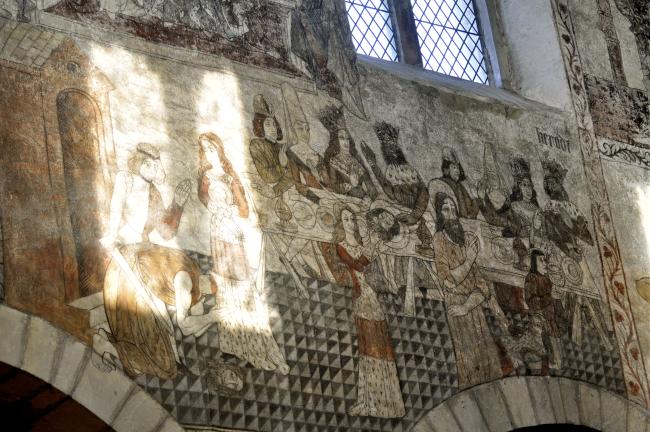
Peak District
Discover breath taking views of stunning limestone valleys, rugged gritstone landscapes and magnificent stately homes. A world of contrasting natural beauty, with moors and dales, rivers, springs and caverns and at the heart of it all glorious churches. This is the Peak District National Park, our oldest national park.
Our must see
On a gentle hill St Lawrence, Eyam is noted for the historical reality of the plague in 1665-66.
The church extends a warm welcome to visitors from across the world, who come to discover the story of a village which cut itself off in order to protect it's neighbours. The plague ended in October 1666 and had claimed 260 lives in a 14 month period. Some of the village cottages have plaques remembering those who died there. One window in the church includes a 'ring of roses', a reminder that the nursery rhyme had a deadly origin. The ring of roses is symbolic of a rosy skin rash which turned purple, a plague symptom. The posies were herbs and flowers carried as a protection and to ward off the smell of the disease. Sneezing or coughing was a final fatal symptom, and 'all fall down' was death.
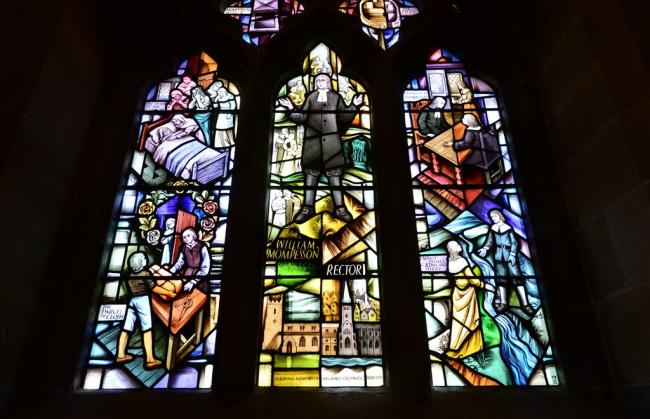
Our other highlights
Peak District villages are known for their wonderful well dressings, usual held around August. It's a wonderful time to visit and explore both churches and wells.
Down in the south of the park, All Saints, Bakewell is a stunner so don't eat so much pudding that you can't walk up the hill!
The earliest church dates from Anglo Saxon times, but there were probably Christians here long before then, very likely they were among the Roman settlers from the 2nd century onwards. Two Anglo Saxon stone crosses can be found in the churchyard, each bearing intricate carvings. There are also many other carved stone fragments displayed in the porch, and nearby are five ancient stone coffins.
Further north and into the Hope Valley to discover the final resting place of one of Robin Hood's merry band. St Michael & All Angels, Hathersage stands close to the remains of an ancient Danish settlement. Tradition has it that Little John was a Hathersage man and that he died in a small cottage near the church, pulled down in the 19th century.
Just down the road, and lying in the lee of mysterious Mam Tor, locally known as the 'Shivering Mountain', Castleton is one of the most beautifully situated villages in the White Peak. It is the only place in the world where the semi precious stone Blue John, unique to this small area, can be found. St Edmund, Castleton provides a haven of peace and tranquillity in this busy tourist village.
Finally, don't miss the view from atop the steep hill at St Nicholas, High Bradfield. Home to a renowned music festival and other arts events, this gorgeous church, sits on a knoll above the village.
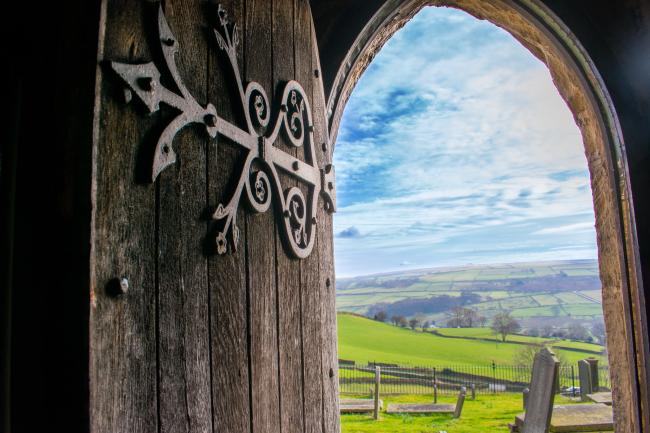
Pembrokeshire Coast
Towering limestone cliffs, golden beaches and hilly volcanic headlands make up the UKs only fully coastal national park. Set off on a voyage of discovery, seek our scenery, sands and ancient churches and chapels hidden amongst the cliffs and crags. This is Pembrokeshire Coast National Park and it's glorious!
Our must see
Heading down to the magical St Govan's Chapel, Bosherston is a truly unique experience.
This little place is perched halfway down, or up, and beside a holy well. This is a place to connect with the ancients and the elemental; a medieval pilgrimage chapel in a dramatic setting, perched on a cliff face above the Atlantic sea, approached down a flight of worn stone steps.
It is thought to date from between the 11th and 13th centuries, but there may have been a chapel here in the 6th century, established by St Govan, an Irish monk who legend has it, was being chased by brigands when a fissure opened in the cliff face.
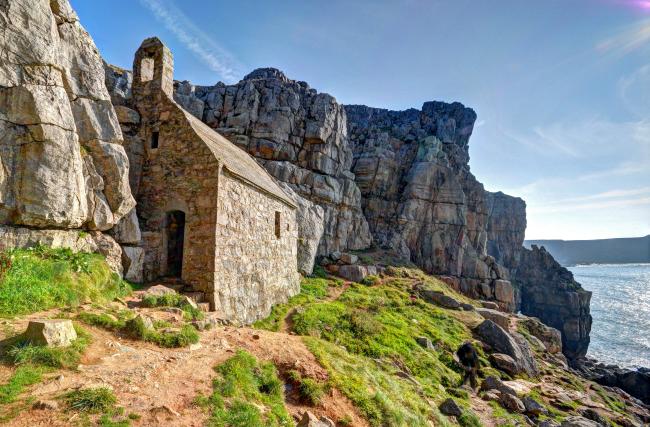
Our other highlights
Also along the cliff is ancient St Gwyndaf, Llanwnda. Overlooking the Atlantic, it was founded in the 6th century, is a ‘palpable reminder of the early saints’ liking for the isolated and the elemental'. It's the perfect place to see from both land and sea on a kayaking pilgrimage. This was the last place to be invaded in Britain. In 1797 French marauders scrambled up the cliffs here one dark and stormy night and took solace in the church. They reputedly lit a fire with the pages of the bible, now kept in a display case with its charred pages on view!
Rows of pretty town houses in pinks, blues, greens and creams line the harbourside. Above them all rises the spire of St Mary, Temby. Here is a memorial to mathematician Robert Recorde who died in 1510 and who is famous for having invented the equals (=) sign!
Heading down the hill to the harbour, you'll discover St Julian, Tenby. This small chapel, sitting right on the harbourside above the beach, was built in 1874-1878 to replace the Fisherman’s Chapel which stood at the seaward end of Tenby’s stone pier. Clergy from St Mary’s church, in the town centre, were paid with seafood to lead the services, which were cancelled when rough weather caused waves to break over the chapel.
No visit to Pembrokeshire is complete without exploring St David's Cathedral.
A sacred place of pilgrimage and worship set on a spectacular Pembrokeshire peninsula jutting out into the Atlantic upon the site of an earlier 6th century monastery built by St David, the patron saint of Wales. St Davids has been described as a ‘thin place,’ a place where the distance between heaven and earth is thin as gossamer, a place where the prayers of thousands of pilgrims are tangible. Many find themselves touched by this deep spiritual atmosphere.
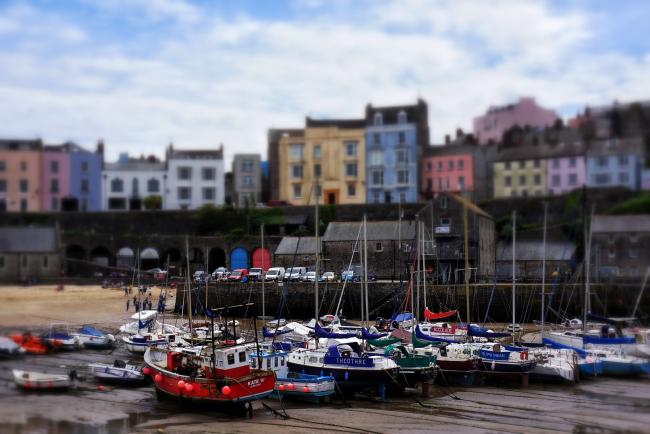
Snowdonia
Dominated by the impressive mountain range from which it takes it name, discover picturesque villages, fast flowing waterfalls and a coastline of fine sandy beaches in Snowdonia National Park.
Snowdon is the highest mountain in England and Wales. There is well as a wealth of picturesque villages in an area steeped in culture and local history, where more than half its population speak Welsh.
Our must see
The ancient church of St Tanwg, Llandanwg sits within the sand dunes. Often described as a ‘thin place’ where the gap between heaven and earth seems to narrow a little, it was founded in the 5th century, with quite a few inscribed stones inside to prove it. St Tanwg’s is the church that time forgot; its whitewashed walls undulating with age and its massive arch braced roof five hundred years old and counting.
Outside, though much of the churchyard is lost to the sand dunes, lies the grave of the poet Sion Phillips, a contemporary of Shakespeare, who lived at nearby Shell Island and drowned whilst crossing from Shell Island to Llandanwg in 1620.
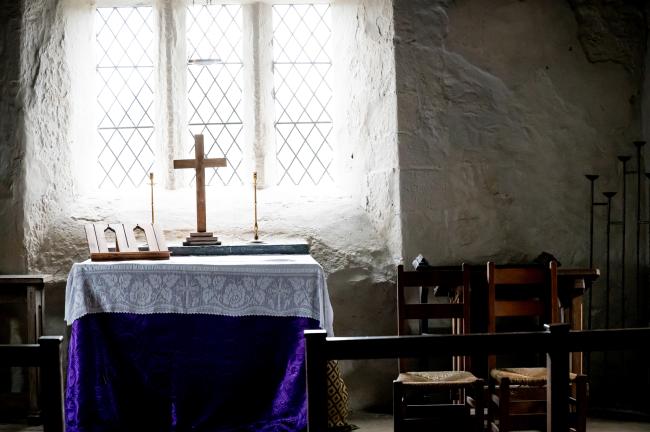
Our other highlights
In an incredible setting with an atmosphere to match, is 12th century Old Church Llangelynnin. A magnet for photographers, walkers, nature lovers and pilgrims alike. Perched high above the Conwy Valley, its rugged simplicity and sweeping views make it a favourite stop on the Pilgrim’s Way to Bardsey Island and part of many other local walks.
The Capel Dynion (Men’s Chapel) to one side provided for Drovers: Welsh cowboys moving herds of black cattle and geese past Llangelynnin as they crossed the mountains on the way to markets as far away as London. Visitors can see the remains of a medieval rood screen and panelled ceiling. On the wall is a wooden bier, used to carry coffins by hand across the hills for funerals. Notice the Ten Commandments and Lord’s Prayer in Welsh painted on the east wall.
Hundreds of people visit St Michael’s Old Church, Betws y Coed every year. At the very heart of the national park, this simple and humble building is the oldest in the village. Many people appreciate a quiet place in which to sit and think and pray, in the chaos that can be thus busy tourist and outdoorsy place.
On the other side of the mountain is St Mary, Beddgelert. This church was once part of an Augustinian priory. In the 16th century, King Henry VIII ordered the dissolution of monasteries and the building became the main church of a parish which covered huge area, including the summit of Snowdon, which can be reached from here via the Watkin Path. Today the village is also known as the home of Gelert’s Grave.
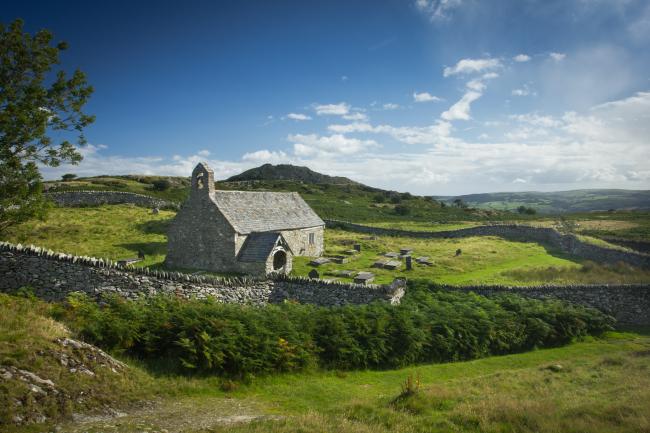
South Downs
Discover the world famous white cliffs, rolling green and gold hills, ancient woodland and lowland heaths of the South Downs National Park. The chalk downland is covered with swathes of distinctive beech and yew hangers clinging to the slopes. The open hilltops give widescreen views over vast fields, with churches popping up from within the green.
Our must see
'The Little Church in a Field' is open every day. St Hubert, Idsworth is remarkable for its solitary position and for unusual wall paintings from the 1330s which were mistakenly believed to depict a scene from the conversion of St Hubert but actually reveal the Hairy Anchorite or wherewolf from a central European legend.
The church is open to visitors each day throughout the year. It is a popular venue for walkers and other recreational and cultural activities.
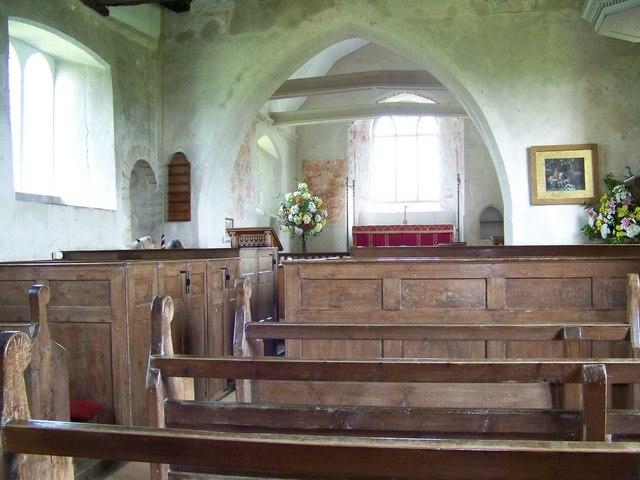
Our other highlights
Another of Bill Bryson's favourite churches is here in the South Downs. Standing on high ground St Andrew, Alfriston dates to around 1370, a strangely late date for this part of Sussex. Next door is the thatched 14th century Old Clergy House, which has the distinction of being the first property bought and saved by the National Trust, way back in 1896.
It stands beside the Tye, a large green that may have served as a market in medieval times. In 1399 the church was granted to Michelham Priory. The church is built on a small mound, surrounded by a flint wall, suggesting that the site was a sacred place in the pre Christian period. The sheer scale of the church has led to its moniker 'The Cathedral of the Downs'. The church seems to have been built in one go, also unusual, at a time when most churches evolved slowly over centuries.
If you're looking for something more modern, then you'll love the way that landscape, art and remembrance are beautifully blended together in the Watts Chapel, Compton. Described as ‘stunning and quirky’ and a must see for Arts & Crafts enthusiasts. The chapel’s extraordinary design, a fusion of Celtic influences and Arts & Crafts architecture, fascinates and overwhelms all who venture up the winding yew tree paths to visit. Visit the grave of Aldous Huxley and enjoy stunning views over the Surrey Hills.
'It is no exaggeration to say the Watts Chapel is one of the most beautiful, extraordinary, original, marvellous and magical buildings in the whole of the British Isles! : Lucinda Lambton
The tiny church of the Good Shepherd, Lullington stands on the side of the South Downs above the Cuckmere Valley, almost hidden amongst a clump of trees. Its white weather boarded belfry peeps above the foliage, and there are magnificent views. It is the smallest church in Sussex, and one of the smallest churches in the country, being 16 feet square, and seating only about 20. There is no electricity and evening services are conducted by candlelight.
Recently, the church was the inspiration for the popular song 'The Smallest Church in Sussex' by the nationally acclaimed band British Sea Power. The organ music featured on that song was made using the harmonium inside the church.
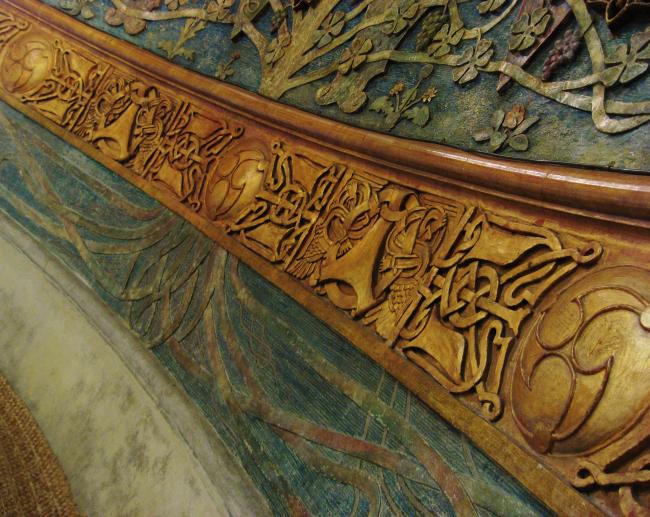
Yorkshire Dales
An area rich in farming heritage, discover heather blanketed uplands and rolling green valleys scattered with traditional field barns and drystone walls. The Yorkshire Dales National Park has many moods; it can be wild and windswept or quietly tranquil with valleys full of hay meadows, drystone walls and barns.
Our must see
Ripon Cathedral has a history stretching back almost fourteen centuries, offering an unbroken tradition of witness to the Christian faith.
The ancient Saxon crypt, one of the oldest in the country, is the only part of Wilfrid's original church that remains to this day. The cathedral also has many other interesting features, not least the medieval woodcarvings that decorate the choir stalls, which are believed to have inspired Lewis Carroll, the author of Alice in Wonderland.
Visitors have followed the pilgrim trail here for over 1300 years and you are most welcome.
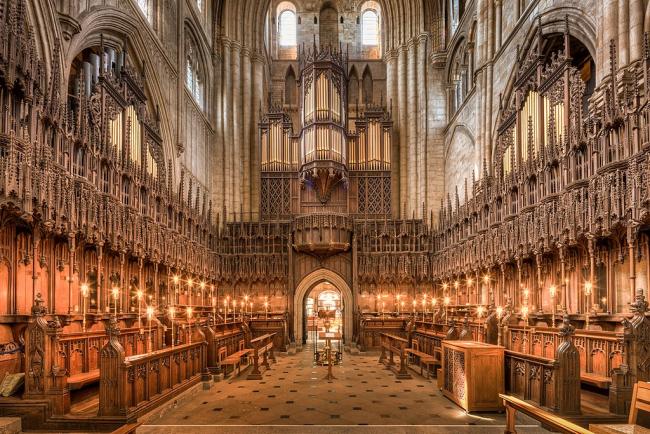
Our other highlights
After you've explored the Cathedral, also close to Ripon are two magnificently different monuments. Jervaulx Abbey was plundered and pillaged during the Dissolution of the Monasteries in the 16th century, it now stands as an enchanting, charming and atmospheric ruin. Allowed to flourish with wild flowers, shrubs and trees freely exploring its many nooks and crannies. The Burdon family, who own the site, have worked hard to keep the peace and tranquility that the Abbey would have always stood for.
The dramatic ruins at nearby Fountains Abbey are the largest monastic ruins in the country. The Abbey was founded in 1132 by 13 Benedictine monks from St Mary's in York seeking to live a devout and simple lifestyle. It's not always quiet now, as the abbey is a popular National Trust site, but it's a stunner!
In one of the many valleys the Dales are named for, sits ancient St Michael the Archangel, Kirkby in Malhamdale.
'This was our local church during eight happy years I spent in the Yorkshire Dales and it was treasured not only as a place of worship but also as a kind of community centre. It’s often called the Cathedral of the Dales for reasons that become instantly apparent when you see it. It is massive' : Bill Bryson
At the western edge of the park, and perhaps the other end of the scale, is Cautley Chapel, Sedbergh. It forms part of a trail of small chapels linked to the history of the railways and religion in the Western Dales. The Carlisle to Settle railway line was built between 1870-1876, its 73 miles include 20 viaducts and 14 tunnels cut by hand through steep, often boggy, isolated and exposed countryside. Over 6,000 'navvies' lived and worked in appalling conditions during its construction. The Methodists were significant providers of welfare and spiritual help to the railway workers.
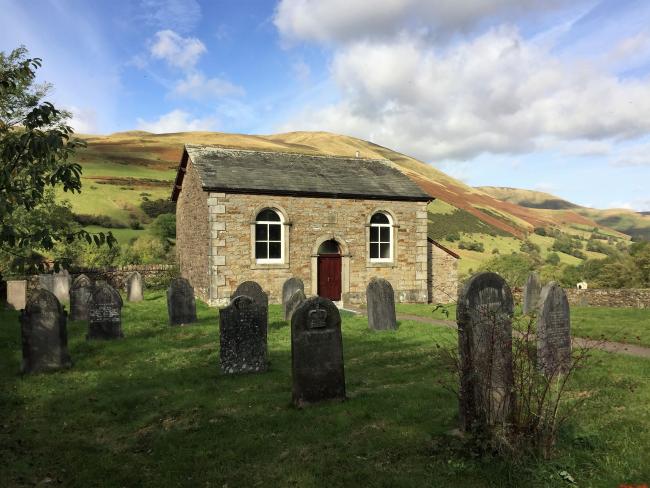
National Parks UK
Discover incredible landscapes, wildlife, lifestyles and adventures. Find your self.
The UKs National Parks welcome over 100 million visits every year.
Find them all in one place and #BeMoreOutside
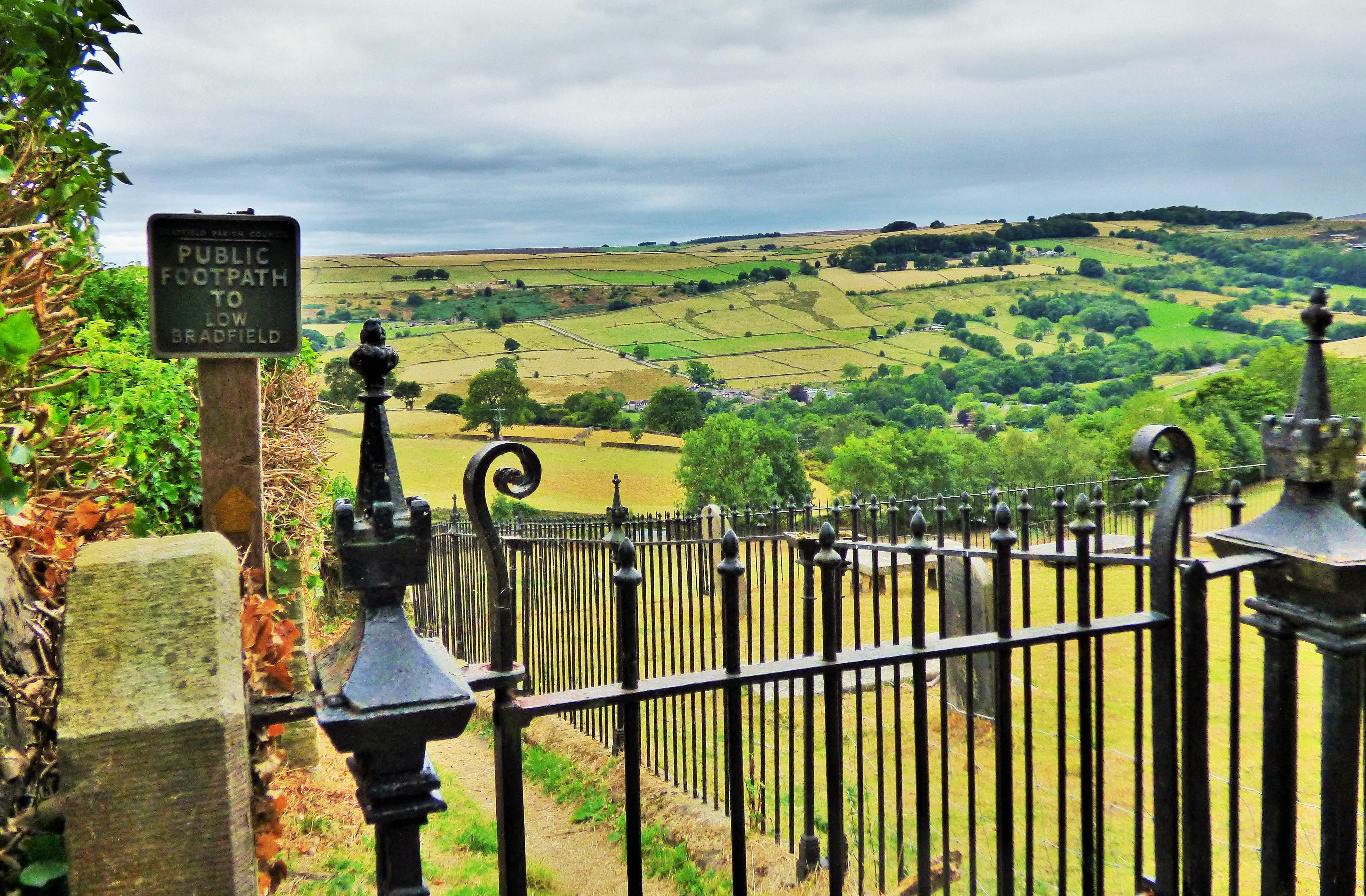
GrassrootsGroundswell

